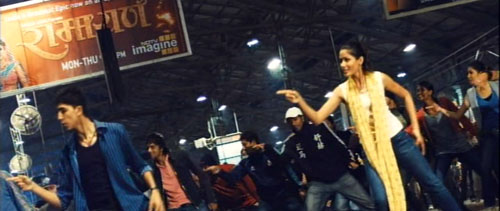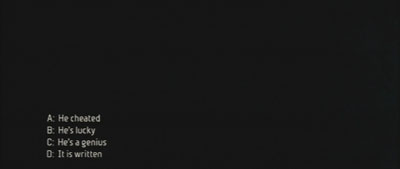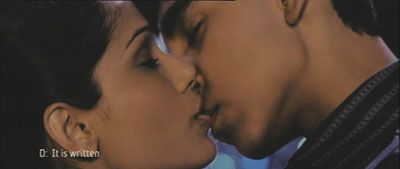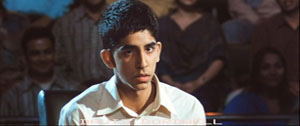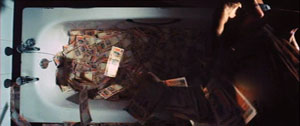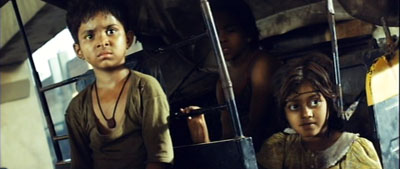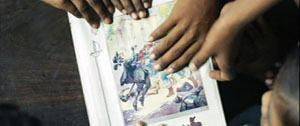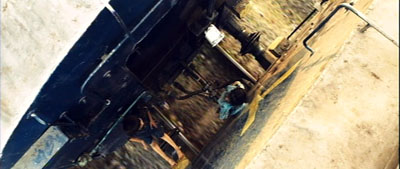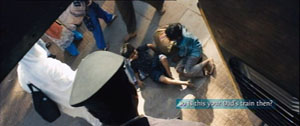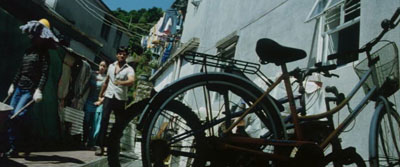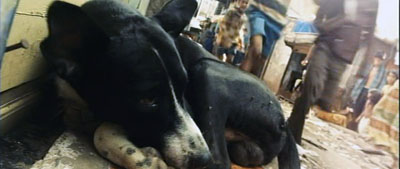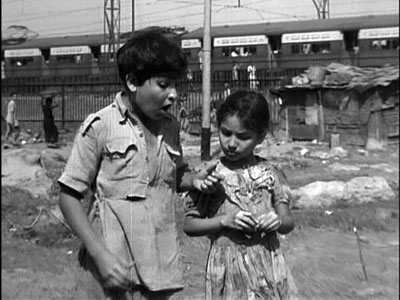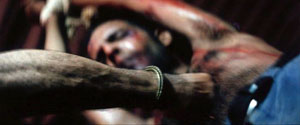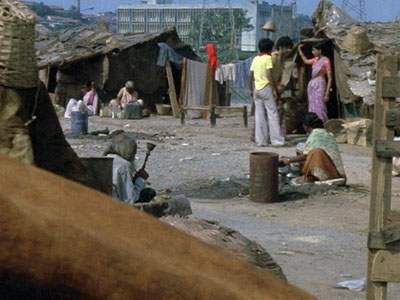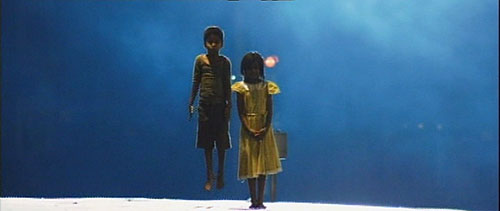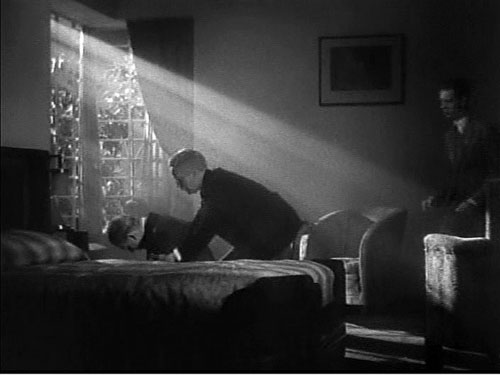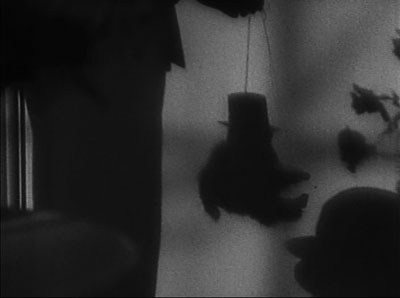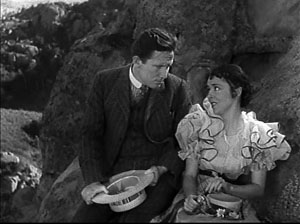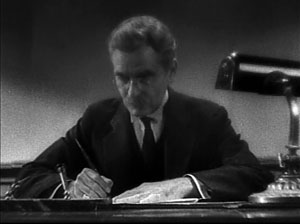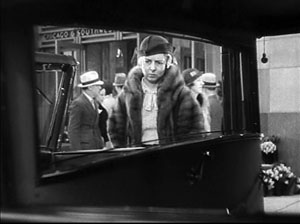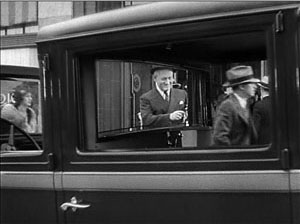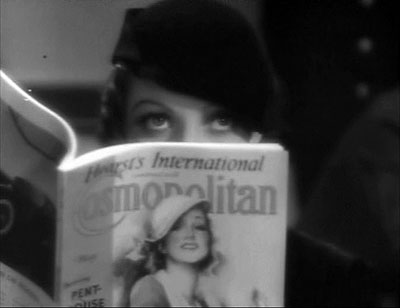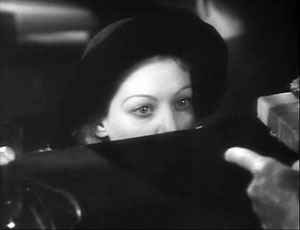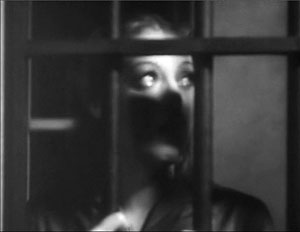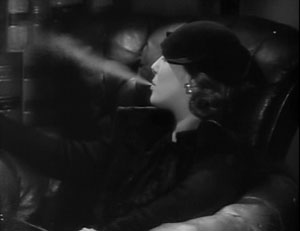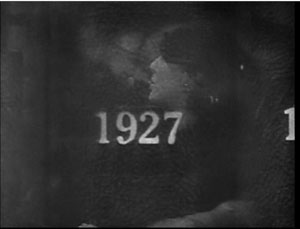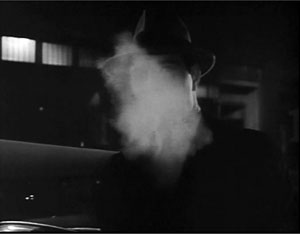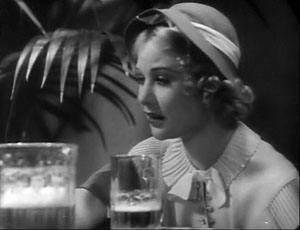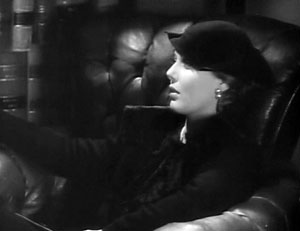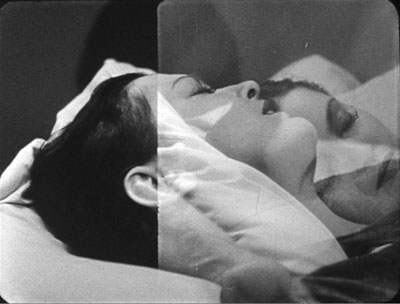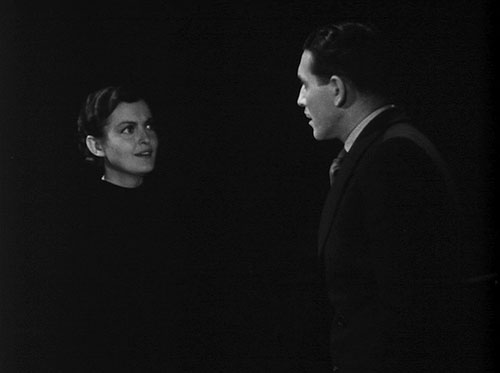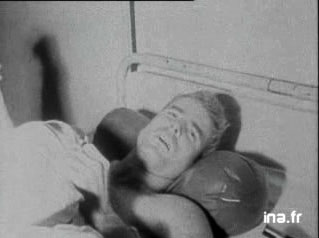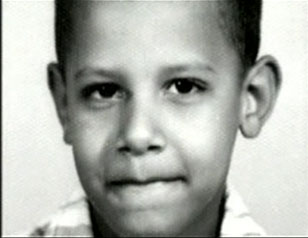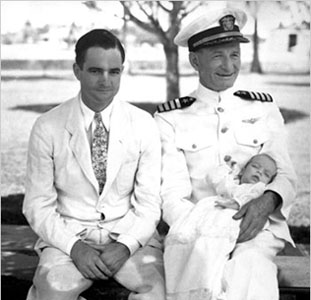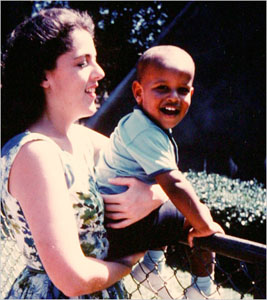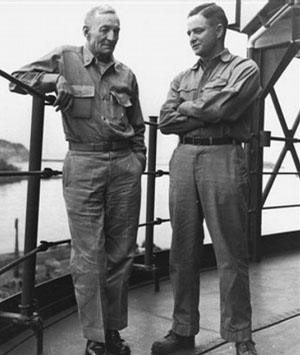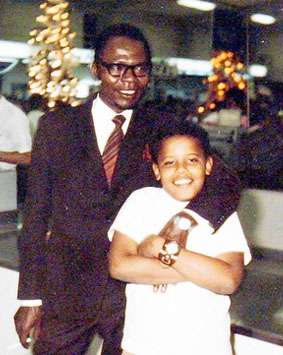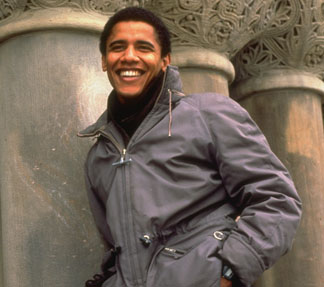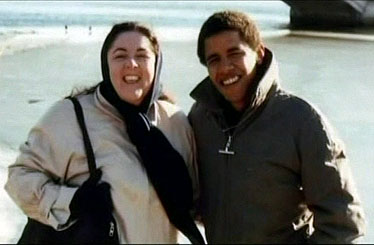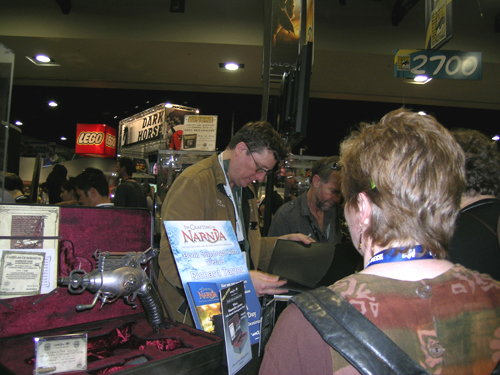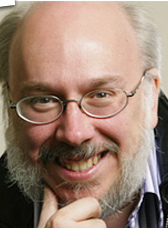Archive for the 'Film and other media' Category
Slumdogged by the past
DB here:
In graduate school a professor of mine claimed that one benefit of studying film history was that “you’re never surprised by anything that comes along.”
This isn’t something to tell young people. They want to be surprised, preferably every few hours. So I rejected the professor’s comment, and I still think it’s not a solid rationale for studying film history. But I can’t deny that doing historical research does give you a twinge of déjà vu.
For instance, the film industry’s current efforts to sell Imax and 3-D irresistibly remind me of what happened in the early 1950s, when Hollywood went over to widescreen (Cinerama, CinemaScope, and the like), stereophonic sound, and for a little while 3-D. Then the need was to yank people away from their TV sets and barbecue pits. Now people need to be wooed from videogames and the Net. But the logic is the same: Offer people something they can’t get at home. It’s 1953 once more.
So historians can’t resist the “Here we go again” reflex. But they shouldn’t turn that into a languid “I’ve seen it all before.” Because we can genuinely be surprised. Occasionally, there are really innovative movies that, no matter how much they owe to tradition, constitute milestones. In my view, Kiarostami’s Through the Olive Trees, Hou’s City of Sadness, Wong’s Chungking Express, Tarr’s Satantango, and Tarantino’s Pulp Fiction are among the 1990s examples of strong and original works.
More often, the films we see draw on film history in milder ways than these milestones. But this doesn’t mean that these movies lack significance or impact. We can be agreeably surprised by the ways in which a filmmaker energizes long-standing cinematic traditions by blending them unexpectedly, tweaking them in fresh ways, setting them loose on new material. And the more you know of those traditions and conventions, the more you can appreciate how they’re modified. Admiring genius shouldn’t keep us from savoring ingenuity.
Which brings me to Slumdog Millionaire. I happen to like the film reasonably well. Part of my enjoyment is based on seeing how forms and formulas drawn from across film history have an enduring appeal. Many people whose judgments I respect hate the movie, and they would probably call what follows an ode to clichés. But I mean this set of notes in the same spirit as my comments on The Dark Knight (which I don’t admire). Even if you disagree with my predilections, you may find something intriguing in Slumdog’s ties to tradition. These ties also suggest why the movie is so ingratiating to so many.
Warning: What follows contains plot spoilers, revelatory images, and atrocious puns.
Slumdog and pony show
Adaptation is still king. Almost as soon as movies started telling stories, they were borrowing from other media. Many of this year’s Oscar candidates are based on plays, novels, and graphic novels. Slumdog is a redo of Vikas Swarup’s 2005 novel Q & A. The book provides the basic situation of a poor youth implausibly triumphing on a version of Who Wants to be a Millionaire? The novel also lays down the film’s overall architecture: in the present, the hero narrates his past, tying each flashback to a round of the game and a relevant question. In the novel, the video replays are described, but of course they’re shown in the film.
There are many disparities between novel and movie, but for now I simply note two. First, Swarup’s book has several minor threads of action, but the film concentrates on Jamal’s love of Latika. (The screenwriter Simon Beaufoy has melded two female characters into one.) Correspondingly, the book introduces a romance plot comparatively late, whereas the film initiates Jamal’s love of Latika in their childhoods. Such choices give the film a simpler through-line. Second, whereas Q & A skips back and forth through Jamal’s life, keying story events to the quiz questions, the film’s flashbacks follow the chronology strictly. This is a good example of how screenwriters are inclined to adjust the plasticity of literary time to the fact that, at least in theatrical screenings, audiences can’t stop and go back to check story order. Clarity of chronology is the default in classical film storytelling.
Then there’s the double plotline. The streamlining of Swarup’s novel points up one convention of Hollywood narrative cinema. The assortment of characters and the twists in the original novel are squeezed down to the two sorts of plotlines we find in most studio films: a line of action involving heterosexual romance and a second line of action, sometimes another romance but just as often involving work. The common work/ family tension of contemporary film plotting is to some extent built into the Hollywood system.
Beaufoy has sharpened the plot by giving Jamal a basic goal: to unite with Latika. The quiz episodes form a means to that end: the boy goes on the show because he knows she watches it. If told in chronological order, the quiz-show stretches would have come late in the film and become a fairly monotonous pendant to the romance plot. One of the many effects of the flashback arrangement is to give the subsidiary goal more prominence, creating a parallel track for the entire film to move along and arousing anomalous suspense. (We know the outcome, but how do we get there?)
Q & A. Swarup’s novel begins: “I have been arrested. For winning a quiz show.”
We have to ask: What could make such a thing happen? Soon the police and the show’s producers are wondering something more specific. How could Ram, an ignorant waiter, have gotten the answers right without cheating?
Noël Carroll proposes that narratives engage us by positing questions, either explicitly or implicitly. Stories in popular media, he suggests, induce the reader to ask rather clear-cut ones, and these will get reframed, deferred, toyed with, and in the short or long run answered.
Slumdog accepts this convention, presenting a cascade of questions to link its scenes and enhance our engagement. Will Jamel and Salim get Bachchan’s autograph? Will they survive the anti-Muslim riot? Will they escape the fate of the other captive beggar children? And so on.
More originally, the film cleverly melds the question-based appeal of narrative with the protocols of the game show, so that we are confronted with a multiple-choicer at the very start. (As in narrative itself, the truth comes at the end.) The principal question will be answered in the denouement, in a comparably impersonal register.
Flashbacks are also a long-standing storytelling device, as I was saying here last week. A canonical situation is the police interrogation that frames the past events, as in Mildred Pierce, The Usual Suspects, and Bertolucci’s The Grim Reaper. This narrating frame is comfortable and easy to assimilate, and it guides us in following the time shifts.
But 1960s cinema gave flashbacks a new force. From Hiroshima mon amour (1958) onward, brief and enigmatic flashbacks, interrupting the ongoing present-tense action, became common ways to engage the audience. Such is the case with the glimpse of Latika at the station that pops up during the questioning of Jamal, rendered as almost an eyeline match.
At this point we don’t know who she is, but the image creates curiosity that the story will eventually satisfy. Flashbacks can also remind us of things we’ve seen before, as when Jamal recalls, obsessively, the night he and Salim left Latika behind to Maman’s band. Boyle and company call on these time-honored devices in the assurance that wewill pick up on them immediately, as audiences have for decades.
Flashforwards are trickier, and rarer. The 1960s also saw some experimentation with images from future events interrupting the story’s present action. Unless you posit a character who can see the future, as in Don’t Look Now, flashforwards are usually felt as externally imposed, the traces of a filmmaker teasing us with images that we can’t really assimilate at this point. (See They Shoot Horses, Don’t They?) Such flashforwards pop up during the initial police torture of Jamal.
Encountering the bathtub shot so early in the film, we might take it as a flashback, but actually it anticipates a striking image at the climax, after Jamal has been released and returned to the show. I’d argue that the shot functions thematically, as a vivid announcement of the motif of dirty money that runs through the movie and is associated with not only the gangster world but also the corrupt game show.
Slumdog days
Empathy. One of the most powerful ways to get the audience emotionally involved is to show your protagonist treated unfairly. This happens in spades at the start of Slumdog. A serious-faced boy is subjected to awful torture, then he’s intimidated by unfeeling men in authority. He’s mocked as a chaiwallah by the unctuous host of the show, and laughed at by the audience. Once Jamal’s backstory starts, we see him as a kid (again running up against the law) and suffering a variety of miseries.
To keep Jamal from seeming a passive victim, he is given pluck and purpose. As a boy he resists the teacher, boldly jumps into human manure, shoves through a crowd to get an autograph, and eventually becomes a brazen freelance guide to the Taj Mahal. This is the sort of tenacious, resourceful kid who could get on TV and find Salim in teeming Mumbai. The slumdog is dogged.
Our sympathies spread and divide. Latika is also introduced being treated unfairly. An orphan after the riot, she squats in the rain until Jamal makes her the “Third Musketeer.” By contrast, Salim is introduced as a hard case—making money off access to a toilet, selling Jamal’s Bachchan autograph, resisting bringing Latika into their shelter, and eventually becoming Maman’s “dog” and Latika’s rapist. The double plotline gives us a hero bent on finding and rescuing his beloved; the under-plot gives us a shadier figure who finds redemption by risking his life a final time to help his friends. Jamal emerges ebullient from a sea of shit, but Salim dies drowned in the money he identified with power.
Our three main characters share a childhood, and what happens to them then prefigures what they will do as grownups. This is a long-standing device of classical cinema, stretching back to the silent era. Public Enemy and Angels with Dirty Faces give us the good brother and the bad brother. Wuthering Heights, Kings Row, and It’s a Wonderful Life present romances budding in childhood. These are plenty of less famous examples. Here, for instance, is a synopsis of Sentimental Tommy (1921), a film that may no longer exist.
The people of Thrums ostracize Grizel, a child of 12, and her mother, known as The Painted Lady, until newcomer Tommy Sandys, a highly imaginative boy, comes to the girl’s rescue and they become inseparable friends. Six years later Tommy returns from London, where he has achieved success as an author, and finds that Grizel still loves him. In a sentimental gesture he proposes, but she, realizing that he does not love her, rejects him. In London, Tommy is lionized by Lady Pippinworth, and he follows her to Switzerland. Having lost her mother and believing that Tommy needs her, Grizel comes to him but is overcome by grief to see his love for Lady Pippinworth. Remorseful, Tommy returns home, and after his careful nursing Grizel regains her sanity.
The device isn’t unknown in Indian cinema either; Parinda (1989) motivates the character relationships through actions set in childhood. Somehow, we are drawn to seeing one’s lifetime commitments etched early and fulfilled in adulthood.
This story pattern carries within it one of the great thematic oppositions of the cinema, the tension between destiny and accident. In Slumdog, The Three Musketeers may be introduced casually, but it will somehow provide a template for later events. Lovers are destined to meet, even if by chance, and when chance separates them, they are destined to reunite . . . if only by chance. A plot showing children together assures us that somehow they will re-meet, and their childhood traits and desires will inform what they do as adults. It is written.
This theme reaffirms the psychological consistency prized by classic film dramaturgy as well. Characters are introduced doing something, as we say, “characteristic,” and this first impression becomes all the more ingrained by the sense that things had to be this way. What you choose—say, to pursue the love of your childhood—manifests your character. But then, your character was already defined with special purity in that childhood.
Just another movie conceit? The existence of Classmates.com seems to suggest otherwise.
Chance needs an alibi, however. Hollywood films are filled with coincidences, and the rules of the game suggest that they need some minimal motivation. Not so much at the beginning, perhaps, because in a sense every plot is launched by a coincidence. But surely, our plausibilists ask, how could it happen that an uneducated slumdog would have just the right experiences to win the quiz? A lucky guy!
As Swarup realized, the flashback structure helps the audience by putting past experience and present quiz question in proximity for easy pickup. Yet as Beaufoy indicates in one of the most informative screenwriting interviews I know, the device also softens the impression of an outlandishly lucky contestant. At the start we already know that Jamal has won, so the question for us is not “How did he cheat?” but rather “What life experience does the question tap?” Each of the links is buried in a welter of other details, any one of which could tie into the correct answer. Moreover, sometimes the question asked precedes the relevant flashback, and sometimes it follows the flashback, further camouflaging the neat meshing of past and present.
It’s a diabolical contrivance. If you question Jamal’s luck, you ally with the overbearing authorities who suspect cheating. (You just think the film cheated.) Who wants to side with them? By the end the inevitability granted by the flashback obliges us to accept the inspector’s conclusion: “It is bizarrely plausible.”
The film has an even more devious out. Jamal can reason on his own, arriving at the Cambridge Circus answer. More important, his street smarts have made him such a good judge of character that he realizes that the MC is misleading him about the right answer to the penultimate question. So his winning isn’t entirely coincidence. Life experience has let him suss out the interpersonal dynamics behind the apparently objective game. As for the final answer—a lucky guess? Fate?—it’s a good example of how things can be written (in this case by Alexandre Dumas).
Slumdoggy style
The whole edifice is built on a cinematic technique about a hundred years old: parallel editing. Up to the climax, we alternate between three time frames. The police interrogation takes place in the present, the game show in the recent past (shifting from the video replay to the scenes themselves), and Jamal’s life in the more distant past. Any one of these time streams may be punctuated, as we’ve seen, by brief flashbacks. So the problem is how to manage the transitions between scenes in any one time frame and the transitions among time frames.
Needless to say, our old friend the hook—in dialogue, in imagery—is pressed into service often. A sound bridge may link two periods, with the quiz question echoing over a scene in the past. “How did you manage to get on the show?” Cut to Jamal serving tea in the call center. In a particularly smooth segue, the boys are thrown off the train as kids and roll to the ground as teenagers. There are negative hooks too. At the end of a quarrel with Salim, Jamal walks off saying, “I will never forgive you.” The next scene opens with the two of them sitting on the edge of an uncompleted high-rise building, having come to an uneasy truce.
In the climax, the three time frames all come into sync, creating a single ongoing present. Jamal will return to the show. The double-barreled questions are reformulated. Now we have genuine suspense: Will he win the top prize? Will Latika find him? To pose these engagingly, directors Danny Boyle and Loveleen Tandan create an old-fashioned chase to the rescue.
Each major character gets a line of action, all unwinding simultaneously: Salim prepares to sacrifice himself to the gangster Khan, she flees through traffic, and Jamal enters the contest’s final round. A fourth line of action is added, that of the public intensely following Jamal’s quest for a million. He has become the emblem of the slumdog who makes good.
The rescue doesn’t come off; Latika misses Jamal’s phone plea for a lifeline, and he is on his own. Fortunately, he trusts in luck because “Maybe it’s written, no?” The lovers reunite instead at the train station, where Jamal had pledged to wait for Latika every day at 5:00. Fitting, then, that in the epilogue a crowd shows up, standing in for all of Mumbai, singing and dancing to “Jai Ho” (“Victory”). All the remaining lines of action—Jamal, Latika, and the multitudes—assemble and then disperse in a classic ending: lovers turning from the camera and walking into their future, leaving us behind.
Then there’s the film’s slick technique. The whole thing is presented in a rapid-fire array, with nearly sixty scenes and about 2700 shots bombarding us in less than two hours. Critics both friendly and hostile have commented on the film’s headlong pacing and flamboyant pictorial design. If some of Slumdog’s storytelling strategies reach back to the earliest cinema, its look and feel seems tied to the 1990s and 2000s. We get harsh cuts, distended wide-angle compositions, hurtling camerawork, canted angles, dazzling montage sequences, faces split by the screen edge, zones of colored light, slow motion, fast motion, stepped motion, reverse motion (though seldom no motion). The pounding style, tinged with a certain cheekiness, is already there in most of Danny Boyle’s previous work. Like Baz Luhrmann, he seems to think that we need to see even the simplest action from every conceivable angle.
Yet the stylistic flamboyance isn’t unique to him. He is recombining items on the menu of contemporary cinema, as seen in films as various as Déjà Vu and City of God. (That menu in turn isn’t absolutely new either, but I’ve launched that case in The Way Hollywood Tells It.) More surprisingly, we find strong congruences between this movie’s style and trends in Indian cinema as well.
Over the last twenty years Indian cinema has cultivated its own fairly flashy action cinema, usually in crime films. Boyle has spoken of being influenced by two Ram Gopal Varma films, Satya (1998) and Company (2002). Company‘s thrusting wide angles, overhead shots, and pugilistic jump cuts would be right at home in Slumdog.
It seems, then, that Slumdog’s glazed, frenetic surface testifies to the globalization of one option for modern popular cinema. The film’s style seems to me a personalized variant of what has for better or worse become an international style.
Slumdogma
Boot Polish.
I’d like to mention many other ways in which the movie engages viewers, such as running (an index of popular cinema; does anybody run in Antonioni?). But I’ve said enough to suggest that the film is anchored in film history in ways that are likely to promote its appeal to a broad audience. The idea of looking for appeals that cross cultures rather than divide them isn’t popular with film academics right now, but a new generation of scholars is daring to say that there are universals of representation and response. It is these that allow movies to arouse similar emotions across times and places.
Patrick Hogan has made such a case in his fine new book Understanding Indian Movies: Culture, Cognition, and Cinematic Imagination. There he shows that much of what seems exotic in Indian cinema constitutes a local specification of factors that have a broad reach—certain plot schemes, themes, and visual and auditory techniques. Hogan, an expert in Indian history and culture, is ideally placed to balance universal appeals with matters of local knowledge that require explication for outsiders.
For my part, I’d just mention that a great deal of what seems striking in Slumdog has already been broached in Indian cinema. Take the matter of police brutality. The torture scene at the start might seem a piece of exhibitionism, with an outsider (Boyle? Beaufoy?) twisting local culture to western ideas of uncivilized behavior. But look again at the gangster films I’ve mentioned: they contain brutal scenes of police torture, like this from Company.
Like Hong Kong cinema and American cinema, Indian filmmaking seems to take a jaundiced view of how faithful peace officers are to due process.
More basically, consider the representation of the Mumbai slums. Doubtless the title slants the case from the first; Beaufoy claims to have invented the word “slumdog,” though Ram is called a dog at one point in the novel. The insult, and the portrayal of Mumbai, has made some critics find the film sensationalistic and patronizing. Most frequently quoted is megastar Amitabh Bachchan’s blog entry.
If SM projects India as [a] Third World dirty underbelly developing nation and causes pain and disgust among nationalists and patriots, let it be known that a murky underbelly exists and thrives even in the most developed nations.
Soon Bachchan explained that he was neutrally summarizing the comments of correspondents, not expressing his own view. In the original, he seems to have been suggesting that the poverty shown in Slumdog is not unique to India, and that a film portraying poverty in another country might not be given so much recognition.
It’s an interesting point, although many films from other nations portray urban poverty. More generally, Indian criticisms of the image of poverty in Slumdog remind me of reactions to Italian Neorealism from authorities concerned about Italy’s image abroad. The government undersecretary Giulio Andreotti claimed that films by Rossellini, De Sica, and others were “washing Italy’s dirty linen in public.” Andreotti wrote that De Sica’s Umberto D had rendered “wretched service to his fatherland, which is also the fatherland of . . . progressive social legislation.” Liberal American films of the Cold War period were sometimes castigated by members of Congress for playing into the hands of Soviet propagandists. It seems that there will always be people who consider films portraying social injustice to be too negative and failing to see the bright side of things, a side that can always be found if you look hard enough.
Moreover, Neorealists made a discovery that has resonated throughout festival cinema: feature kids. Along with sex, a child-centered plot is a central convention of non-Hollywood filmmaking, from Shoeshine and Germany Year Zero through Los Olvidados and The 400 Blows up to Salaam Bombay, numerous Iranian films, and Ramchandi Pakistani. Yes, Slumdog simplifies social problems by portraying the underclass through children’s misadventures, but this narrative device is a well-tried way to secure audience understanding. We have all been children.
There is another way to consider the poverty problem. The representation of slum life, either sentimentally or scathingly, can be found in classic Indian films of the 1950s. One of my favorites of Raj Kapoor’s work, Boot Polish (1954), tells a Dickensian tale of a brother and sister living in the slums before being rescued by a rich couple. (Interestingly, the key issue is whether to beg or do humble work.) Another example is Bimal Roy’s Do Bigha Zamin (Two Acres of Land, 1953). Later, shantytown life was more harshly presented in Chakra (1981), shot on location.
And of course poverty in the countryside has not been overlooked by Indian filmmakers.
Slumdog may have become a flashpoint because more recent Indian cinema has avoided this subject. In an email to me Patrick Hogan (who hasn’t yet seem Slumdog) writes:
There was a strong progressive political orientation in Hindi cinema in the 1940s and 1950s. This declined in the 1960s until it appeared again with some works of parallel cinema. Thus there was a greater concern with the poor in the 1950s–hence the movies by Kapoor and Roy that you mention. There are some powerful works of parallel cinema that treat slum life, but they had relatively limited circulation. On the other hand, that does not mean that urban poverty disappeared entirely from mainstream cinema. At least some sense of social concern seemed to be retained in mainstream Indian culture, thus mainstream cinema, until the late 1980s.
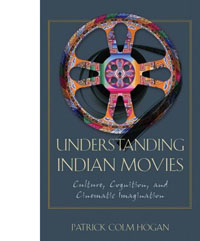 However, at that time Nehruvian socialism was more or less entirely abandoned and replaced with neo-liberalism. In keeping with this, ideologies changed. Perhaps because the consumers of movies became the new middle classes in India and the Diaspora, there was a striking shift in what classes appeared in Hindi cinema and how classes were depicted. As many people have noted, films of the neoliberal period present images of fabulously wealthy Indians and generally focus on Indians whose standard of living is probably in the top few percentage points. . . . I don’t believe this is simply a celebration of wealth and pandering to the self-image of the nouveau riche–though it is that. I believe it is also a celebration of neoliberal policies. Neoliberal policies have been very good for some people. But they have been very bad for others. . . .
However, at that time Nehruvian socialism was more or less entirely abandoned and replaced with neo-liberalism. In keeping with this, ideologies changed. Perhaps because the consumers of movies became the new middle classes in India and the Diaspora, there was a striking shift in what classes appeared in Hindi cinema and how classes were depicted. As many people have noted, films of the neoliberal period present images of fabulously wealthy Indians and generally focus on Indians whose standard of living is probably in the top few percentage points. . . . I don’t believe this is simply a celebration of wealth and pandering to the self-image of the nouveau riche–though it is that. I believe it is also a celebration of neoliberal policies. Neoliberal policies have been very good for some people. But they have been very bad for others. . . .
In this neoliberal cinema (sometimes misleadingly referred to as “globalized”), even relatively poor Indians are commonly represented as pretty comfortable. The difference in attitude is neatly represented by two films by Mani Ratnam—Nayakan (1987) and Guru (2007). The former is a representation of the difficulties of the poor in Indian society. The film already suffers from a loss of the socialist perspective of the 1950s films. Basically, it celebrates an “up from nothing” gangster for Robin Hood-like behavior. (This is an oversimplification, but gives you the idea.)
Guru, by contrast, celebrates a corrupt industrialist who liberates all of India by, in effect, following neoliberal policies against the laws of the government. Neither film offers a particularly admirable social vision. But the former shows the urban poor struggling against debilitating conditions. The latter simply shows a sea of happy capitalists and indicates that lingering socialistic views are preventing India from becoming the wealthiest nation in the world. Part of the propaganda for neoliberalism is pretending that poor people don’t exist any longer–or, if they do, they are just a few who haven’t yet received the benefits.
Paradoxically, then, perhaps local complaints against Slumdog arise because the film took up a subject that hasn’t recently appeared on screens very prominently. The same point seems to be made by Indian commentators and by Indian filmmakers who deplore the fact that none of their number had the courage to make such a movie. The subject demands more probing, but perhaps the outsider Boyle has helped revive interest in an important strain of the native tradition!
Finally, the issue of glamorizing the exotic. Some critics call the film “poverty porn,” but I don’t understand the label. It implies that pornography of any sort is vulgar and distressing, but which of these critics would say that it is? Most such critics consider themselves worldly enough not to bat an eye at naughty pictures. Some even like Russ Meyer.
So is the issue that the film, like pornography, prettifies and thereby falsifies its subject? Several Indian films, like Boot Polish, have portrayed poverty in a sunnier light than Slumdog, yet I’ve not heard the term applied to them. Perhaps, then, the argument is that pornography exploits eroticism for money, and Slumdog exploits Indian culture. Of course every commercial film could be said to exploit some subject for profit, which would make Hollywood a vast porn shop. (Some people think it is, but not typically the critics who apply the porn term to Slumdog.) In any case, once any commercial cinema falls under the rubric of porn, then the concept loses all specificity, if it had any to begin with.
The Slumdog project is an effort at crossover, and like all crossovers it can be criticized from either side. And it invites accusations of imperialism. A British director and writer use British and American money to make a film about Mumbai life. The film evokes popular Indian cinema in circumscribed ways. It gets a degree of worldwide theatrical circulation that few mainstream Indian films find. This last circumstance is unfair, I agree; I’ve long lamented that significant work from other nations is often ignored in mainstream US culture (and it’s one reason I do the sort of research I do). But I also believe that creators from one culture can do good work in portraying another one. No one protests that that Milos Forman and Roman Polanski, from Communist societies, made One Flew Over the Cuckoo’s Nest and Chinatown. No one sees anything intrinsically objectionable in the Pang brothers or Kitano Takeshi coming to America to make films. Most of us would have been happy had Kurosawa had a chance to make Runaway Train here. Conversely, Clint Eastwood receives praise for Letters from Iwo Jima.
Just as there is no single and correct “Indian” or “American” or “French” point of view on anything, we shouldn’t deny the possibility that outsiders can present a useful perspective on a culture. This doesn’t make Slumdog automatically a good film. It simply suggests that we shouldn’t dismiss it based on easy labels or the passports of its creators.
Moreover, it isn’t as if Boyle and Tandan have somehow contaminated a pristine tradition. Indian popular films have long been hybrids, borrowing from European and American cinema on many levels. Their mixture of local and international elements has helped the films travel overseas and become objects of adoration to many westerners.
I believe we should examine films for their political presuppositions. But those presuppositions require reflection, not quick labels. If I were to sketch an ideological interpretation of Slumdog, I’d return to the issue of how money is represented in an economy that traffics in maimed children, virgins, and robotic employees. Money is filthy, associated with blood, death, and commercial corruption. The beggar barracks, the brothel, the call center, and the quiz show lie along a continuum. So to stay pure and childlike one must act without concern for cash. The slumdog millionaire doesn’t want the treasure, only the princess, and we never see him collect his ten million rupees. (An American movie loves to see the loser write a check.) To invoke Neorealism again, we seem to have something like Miracle in Milan–realism of local color alongside a plot that is frankly magical.
Perhaps this quality supports the creators’ claims that the film is a fairy tale. As with all fairy tales, and nearly all movies I know, dig deep enough and you’ll find an ideological evasion. Still, that evasion can be more or less artful and engrossing.
So it seems to me enlightening and pleasurable to see every film as suspended in a web, with fibers connecting it to different traditions, many levels and patches of film history. Acknowledging this shows that most traditions aren’t easily exhausted, and that fresh filmmaking tactics can make them live again. Thinking historically need not numb us to surprises.
The amount of Web writing on Slumdog is exploding. Go to GreenCine for a good sampling of commentary from late 2008. The film’s technique is discussed in Stephanie Argy, “Rags to Riches,” American Cinematographer 89, 12 (December 2008), 44-61. Boyle shows his camera to Darren Aronofsky at Slantfilm. Kim Voynar of Movie City News reviews, critically, the Slumdog backlash.
For a more detailed rationale for this entry’s suspension of value judgments for the sake of analysis, try my earlier blog entry here. Noël Carroll discusses question-and-answer structures in narrative in several books, notably The Philosophy of Horror; or, Paradoxes of the Heart (New York: Routledge, 1990), 130-136. On recent Indian action movies, see Lalitha Gopalan, Cinema of Interruptions: Action Genres in Contemporary Indian Cinema (London: British Film Institute, 2002). The quotations from Giulio Andreotti come from P. Adams Sitney, Vital Crises in Italian Cinema: Iconography, Stylistics, Politics (Austin: University of Texas Press, 1995), 107; and Millicent Marcus, Italian Film in the Light of Neorealism (Princeton: Princeton University Press, 1986), 26.
Thanks to Cathy Root, who is at work on a book on Bollywood, for advice and links. Thanks as well to Patrick Colm Hogan and Lalita Pandit for corrections, information, and ideas.
PS 2 Feb: David Chute, expert on Indian cinema, has written a helpful and balanced entry on Slumdog at his Hungry Ghost site.
PPS 14 Feb: From another expert on Indian film, Corey Creekmur, at the University of Iowa, some further ideas and references on the childhood motif:
I would emphasize that establishing a film’s narrative direction through childhood events is a dominant narrative trope in popular Indian cinema, animating many famous “golden age” examples, including Raj Kapoor’s Awara (1951), Mehboob Khan’s Anmol Ghadi (1946), and Bimal Roy’s Devdas (1955), along with a number of the major 1970s films starring Amitabh Bachchan, which often carry childhood traumas into the adult character’s life. The story of brothers growing up on two sides of the law is also a Hindi film staple, central to Bachchan’s emergence as a superstar in Deewar in 1975. It seems to me curious that Slumdog Millionaire’s Western filmmakers draw on these conventions more fully than the source novel [Q & A] by a non-resident Indian does.
I attempt to explain the decades-long cultural function (and eventual waning) of this narrative trope — often achieved through a specific formal device (a dissolve from boy to man) moving from the lives of children to adults (skipping over adolescence) that I call the “maturation dissolve” — in an article “Bombay Boys: Dissolving the Male Child in Popular Hindi Cinema,” in Where the Boys Are: Cinemas of Boyhood, ed. Murray Pomerance and Frances Gateward. (Detroit: Wayne State UP, 2004). In that essay I suggest that some of the Hollywood examples — as well as Citizen Kane — you mention could have inspired the Indian examples, but also suggest certain Indian sources (the childhood love of the god Krishna and his consort Radha, which informs all versions of Devdas) as well. Since I’m citing myself, I’ll also note a recent essay on the “Devdas” phenomenon in Indian cinema: “Remembering, Repeating, and Working Through Devdas,” which appears in Indian Literature and Popular Cinema: Recasting Classics, ed. Heidi R. M. Pauwels (Routledge, 2008). By the way, you might also enjoy a website devoted to popular Hindi cinema by my colleague Philip Lutgendorf (with whom I regularly teach Indian cinema classes). Most of the entries on his site are his, but as you will note, sometimes he lets me put my two cents in there as well: http://www.uiowa.edu/~incinema/
PPPS 21 February: Several scholars comment on the film’s representation of the Dahravi neighborhood and the multilayered significance of Indian protests against Slumdog. See today’s New York Times here and here.
Grandmaster flashback
DB here:
Elsewhere I’ve sung the glories of Turner Classic Movies. Would that the other basic-cable staple, the Fox Movie Channel, were as committed to classic cinema. It’s curious that a studio with a magnificent DVD publishing program (the Ford boxed set, the Murnau/ Borzage one) is so lackluster in its broadcast offerings. Fox was one of the greatest and most distinctive studios, and its vaults harbor many treasures, including glossy program pictures that would still be of interest to historians and fans. Where, for instance, is Caravan (1934), by the émigré director Erik Charell who made The Congress Dances (1931)? Caravan‘s elaborate long takes would be eye candy for Ophuls-besotted cinephiles.
Occasionally, though, the Fox schedulers bring out an unexpected treat, such as the sci-fi musical comedy Just Imagine (1930). Last month, the main attraction for me was The Power and the Glory (1933), directed by William K. Howard from a script by Preston Sturges.
This was an elusive rarity in my salad days. As a teenager I read that it prefigured Citizen Kane, presenting the life of a tycoon in a series of daring flashbacks. I think I first saw it in the late 1960s at a William K. Everson screening at the New School for Social Research. I caught up with it again in 1979, at the Thalia in New York City, on a double bill with The Great McGinty (1940). In my files, along with my scrawls on ring-binder paper, is James Harvey’s brisk program note, which includes lines like this: “One of Sturges’ achievements was to make movies about ordinary people that never ever make us think of the word ‘ordinary.’” I was finally able to look closely at The Power and the Glory while doing research for The Classical Hollywood Cinema (1985). The UCLA archive kindly let me see a 16mm print on a flatbed viewer.
So after a lapse of twenty-eight years I revisited P & G on the Fox channel last month. It does indeed prefigure Kane, but I now realize that for all its innovations it belongs to a rich tradition of flashback movies, and it can be correlated with a shorter-term cycle of them. Rewatching it also teased me to think about flashbacks in general, and to research them a little. You see, I am very fond of what contemporary practitioners like to call broken timelines.
A trick, an old story
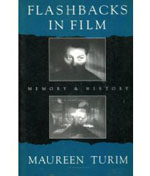 On our subject for today, the indispensible book, which ought to be brought back into print or archived online, is Maureen Turim’s Flashbacks in Film: Memory and History (Routledge, 1989). We may think of the flashback as a modern technique, but Turim shows that flashbacks have been a mainstay of filmic storytelling since the 1910s.
On our subject for today, the indispensible book, which ought to be brought back into print or archived online, is Maureen Turim’s Flashbacks in Film: Memory and History (Routledge, 1989). We may think of the flashback as a modern technique, but Turim shows that flashbacks have been a mainstay of filmic storytelling since the 1910s.
Although the term flashback can be found as early as 1916, for some years it had multiple meanings. Some 1920s writers used it to refer to any interruption of one strand of action by another. At a horse race, after a shot of the horses, the film might “flash back” to the crowd watching. (See “Jargon of the Studio,” New York Times for 21 October 1923, X5.) In this sense, the term took on the same meaning as then-current terms like “cut-back” and “switch-back.” There was also the connotation of speed, as “flash” was commonly used to denote any short shot.
But around 1920 we also find the term being used in our modern sense. You can find it in popular fiction; one short story has its female protagonist remembering something “in a confused flashback.” F. Scott Fitzgerald writes in The Beautiful and Damned of 1922:
Anthony had a start of memory, so vivid that before his closed eyes there formed a picture, distinct as a flashback on a screen.
At about the same time writers on theatre start to adopt the term and credit it to film. A historian of drama writes in 1921 of a play that rearranges story order:
The movies had not yet invented the flashback, whereby a thing past may be repeated as a story or a dream in the present.
Within film circles, there were signs of an exasperation with the device. One 1921 writer calls the flashback a “murderous assault on the imagination.” Turim quotes a New York Times review of His Children’s Children (1923):
For once a flash-back, as it is made in this photoplay, is interesting. It was put on to show how the older Kayne came to say his prayers.
In the same year, a critic discusses Elmer Rice’s On Trial, an influential 1911 stage play. Rice employs
a dramatic technique which up to its time was probably unique, though since then the ever recurrent “flash back” of the movies has made the trick an old story.
During the 1930s, although some critics and filmmakers employed older terms like “switch back” and “retrospect,” flashback seems to have become the standard label. It denoted any shot or scene that breaks into present-time action to show us something that happened in the past. It probably speaks to the intuitive and informal nature of filmmaking that writers and directors didn’t feel a need to name a technique that they were using confidently for two decades.
The early flashback films pretty much set the pattern for what would come later. Turim shows that all the sorts we find today have their precedents in the 1910s and 1920s. Adapting her typology a little bit, we can distinguish between character-based flashbacks and “external” ones.
A character-based flashback may be presented as purely subjective, a person’s private memory, as in Letter to Three Wives or The Pawnbroker or Across the Universe. There’s also the flashback that represents one character’s recounting of past events to another character, a sort of visual illustration of what is told. This flashback is often based on testimony in a trial or investigation (Mortal Thoughts, The Usual Suspects), but it may simply involve a conversation, as in Leave Her to Heaven, Titanic, or Slumdog Millionaire. It can also be triggered by a letter or diary, as happens with the doubly-embedded journals in The Prestige.
An alternative is to break with character altogether and present a purely objective or “external” flashback. Here an impersonal narrating authority simply takes us back in time, without justifying the new scene as character memory or as illustration of dialogue. The external flashback is uncommon in classic studio cinema (although see A Man to Remember, 1938) but was common in the 1900s and 1910s and has returned in contemporary cinema. Typically the film begins at a point of crisis before a title appears signaling the shift to an earlier period. Recent examples are Michael Clayton (“Three days earlier”), Iron Man (“36 Hours Before”), and Vantage Point (“23 Minutes Earlier”).
In current movies, flashbacks can fall between these two possibilities. Are the flashbacks in The Good Shepherd the hero’s recollections (cued by him staring blankly into space) or more objective and external, simply juxtaposing his numb, colorless life with the past disintegration of his family? The point would be relevant if we are trying to assess how much self-knowledge he gains across the present-time action of the film.
Rationales for the flashback
What purposes does a flashback fulfill? Why would any storyteller want to arrange events out of chronological order? Structurally, the answers come down to our old friends causality and parallelism.
Most obviously, a flashback can explain why one character acts as she or he does. Classic instances would be Hitchcock’s trauma films like Spellbound and Marnie. A flashback can also provide information about events that were suppressed or obscured; this is the usual function of the climactic flashback in a detective story, filling in the gaps in our knowledge of a crime.
By juxtaposing two incidents or characters, flashbacks can enhance parallels as well. The flashbacks in The Godfather Part II are positioned to highlight the contrasts between Michael Corleone’s plotting and his father’s rise to power in the community. Citizen Kane’s flashbacks are famous for juxtaposing events in the hero’s life to bring out ironies or dramatic contrasts.
Of course, flashbacks need not explain or clarify things; they can make things more complicated too. We tend to think of the “lying flashback” as a modern invention (a certain Hitchcock film has become the prototype), but Turim shows that The Goose Woman (1925) and Footloose Widows (1926) did the same thing, although not with the same surprise effect. Kristin points out to me that an even earlier example is The Confession (1920), in which a witness at a trial supplies two different versions of a killing we have already (sort of) seen.
At the limit, flashbacks can block our ability to understand characters and plot actions. This is perhaps best illustrated by Last Year at Marienbad, but the dynamic is already there in Jean Epstein’s La Glace à trois faces (“The Three-Sided Mirror,” 1927).
I argue in Poetics of Cinema that, at bottom, flashbacks are tactics fulfilling a broader strategy: breaking up the story’s chronological order. You can begin the film at a climactic moment; once the viewers are hooked, they will wait for you to move back to set things up. You can create mystery about an event that the plot has skipped over, then answer the question through a flashback. You can establish parallels between past and present that might not emerge so clearly if the events were presented in 1-2-3 order. Consequently, you can justify the switch in time by setting up characters as recalling the past, or as recounting it to others.
Having a character remember or recount the past might seem to make the flashback more “realistic,” but flashbacks usually violate plausibility. Even “subjective” flashbacks usually present objective (and reliable) information. More oddly, both memory-flashbacks and telling-flashbacks usually show things that the character didn’t, and couldn’t, witness.
I don’t suggest that recollections and recountings are merely alibis for time-juggling. They bring other appeals into the storytelling mix, such as allegiance with characters, pretexts for point-of-view experimentation, and so on. Still, the basic purpose of nonchronological plotting, I think, is to pattern information across the film’s unfolding so as to shape our state of knowledge and our emotional response in particular ways. Scene by scene and moment by moment, flashbacks play a role in pricking our curiosity about what came before, promoting suspense about what will happen next, and enhancing surprise at any moment.
A trend becomes a tradition
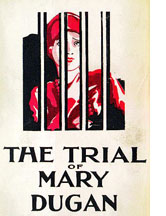 When The Power and the Glory was released in August 1933, it was part of a cycle of flashback films. The Trial of Mary Dugan (1929), The Trial of Vivienne Ware (1932), and other courtroom films rendered testimony in flashbacks. A film might also wedge a brief or extended flashback into an ongoing plot. The most influential instance was probably Smilin’ Through (1931), which is notable for using a crane shot through a garden to link present and past.
When The Power and the Glory was released in August 1933, it was part of a cycle of flashback films. The Trial of Mary Dugan (1929), The Trial of Vivienne Ware (1932), and other courtroom films rendered testimony in flashbacks. A film might also wedge a brief or extended flashback into an ongoing plot. The most influential instance was probably Smilin’ Through (1931), which is notable for using a crane shot through a garden to link present and past.
Also well-established was the extended insert model. Here we start with a critical situation that triggers a flashback (either subjective or external), and this occupies most of the movie. Digging around, I found these instances, but I haven’t seen all of them; some don’t apparently survive.
- Behind the Door (1919): An old sea salt recalls life in World War I and, back in the present, punishes the man responsible for his wife’s death. A ripoff of Victor Sjöström’s Terje Vigen (1917)?
- An Old Sweetheart of Mine (1923): A husband goes through a trunk in an attic and finds a memento that reminds him of childhood sweetheart. The pair grow up and marry, facing tribulations. At the end, back in the present, she comes to the attic with their kids.
- His Master’s Voice (1925): Rex the dog is welcomed home from the war. An extended flashback shows his heroic service for the cause, and back in the present he is rewarded with a parade.
- Silence (1926): A condemned man explains the events that led up to the crime. Back in the present, on his way to be executed, he is saved.
- Forever After (1926): On a World War I battlefield, a soldier recalls what brought him there.
- The Woman on Trial (1927): A defendant recalls her past.
- The Last Command (1928): One of the most famous flashback films of the period. An old movie extra recalls his life in service of the tsar.
- Mammy (1930): A bum reflects on the circumstances leading him to a life on the road.
- Such is Life (1931): A ghoulish item. A fiendish scientist confronts a young man with the corpse of the woman he loves. A flashback to their romance ensues.
- The Sin of Madelon Claudet (1931; often cablecast on TCM): A young wife bored with her husband is told the story of a neighbor woman who couldn’t settle down.
- Two Seconds (1932): A man about to be executed remembers, in the two seconds before death, what led him here. A more mainstream reworking of a premise of Paul Fejos’s experimental Last Moment (1928), which is evidently lost.
An interesting variant of this format is Beyond Victory, a 1931 RKO release. The plot presents four soldiers on the battlefield, each one recalling his courtship of the woman he loves back home. The principle of assembling flashbacks from several characters was at this point prised free of the courtroom setting, and multiple-viewpoint flashbacks became important for investigation plots like Affairs of a Gentleman (1934), Through Different Eyes (1942), The Grand Central Murder (1942), and of course Citizen Kane, itself a sort of mystery tale.
Why this burst of flashback movies? It’s a good question for research. One place to look would be literary culture. The technique of flashback goes back to Homer, and it recurs throughout the history of both oral and written narrative. Literary modernism, however, made writers highly conscious of the possibility of scrambling the order of events. From middlebrow items like The Bridge of San Luis Rey (1927) to high-cultural works by Dos Passos and Faulkner, elaborate flashbacks became organizing principles for entire novels. It’s likely that Sturges, a Manhattanite of wide literary culture, was keenly aware of this trend.
It’s just as likely that he noticed similar developments in another medium. By 1931, when Katharine Seymour and J. T. W. Martin published How to Write for Radio (New York: Longmans, Green), they could devote considerable discussion to frame stories and flashbacks in radio drama (pp. 115-137). Especially interesting for Sturges’ film, radio programs were letting the voice of the announcer or the storyteller drift in and out of the action that was taking place in the past.
For whatever reasons, the technique became more common. The year 1933 saw several flashback films besides The Power and the Glory. In the didactic exploitation item Suspicious Mothers, a woman recounts her wayward path to redemption. Mr. Broadway offers an extensive embedded story using footage from another film (a common practice in the earliest days). Terror Aboard begins with the discovery of corpses on a foundering yacht, followed by an extensive flashback tracing what led up the calamity. A borderline case is the what-if movie Turn Back the Clock (1933). Ever-annoying Lee Tracy plays a small businessman run down by a car. Under anesthesia, he reimagines his life as it might have been had he married the girl he once courted. Call it a rough draft for the “hypothetical flashbacks” that Resnais was to exploit in his great La Guerre est finie.
The point of this cascade of titles is that in writing The Power and the Glory, Sturges was working with a set of conventions already in wide circulation. His inventiveness stands out in two respects: the handling of voice-over and the ordering of the flashbacks.
Now I’m about to divulge details of The Power and the Glory.
Narratage, anyone?
The film begins with what became a commonplace opening gesture of film, fiction, and nonfiction biography: the death of the protagonist. We are at the funeral of Thomas Garner, railroad tycoon. His best friend and assistant Henry slips out of the service. After visiting the company office, Henry returns home. Sitting in the parlor with him, his wife castigates Garner as a wicked man. “It’s a good thing he killed himself.” So we have the classic setup of retrospective suspense: We know the outcome but become curious about what led up to it.
Henry’s defense of Garner launches a series of flashbacks. As a boyhood friend, Henry can take us to three stages of the great man’s life: adolescence, young manhood, and late middle age. Scenes from these time periods are linked by returns to the narrating situation, when Henry’s wife will break in with further criticisms of Garner.
Sturges boasted in a letter to his father: “I have invented an entirely new method of telling stories,” explaining that it combines silent film, sound film, and “the storytelling economy and the richness of characterization of a novel.” At the time, the Paramount publicists trumpeted that the film employed a new storytelling technique labeled narratage, a wedding of “narrating” and “montage.” One publicity item called it “the greatest advance in film entertainment since talking pictures were introduced.” Hyperbole aside, what did Sturges have in mind?
There is evidence that some screenwriters were rethinking their craft after the arrival of sound filming. Exhibit A is Tamar Lane’s book, The New Technique of Screen Writing (McGraw-Hill, 1936). Lane suggests that the talking picture’s promise will be fulfilled best by a “composite” construction blending various media. From the stage comes dialogue technique and sharp compression of action building to a strong climax. From the novel comes a sense of spaciousness, the proliferation of characters, a wider time frame, and multiple lines of action. Cinema contributes its own unique qualities as well, such as the control of tempo and a “pictorial charm” (p. 28) unattainable on the stage or page.
Vague as Lane’s proposal is, it suggests a way to think about the development of Hollywood screenwriting at the time. Many critics and theorists believed that the solution to the problem of talkies was to minimize speech; this is still a common conception of how creative directors dealt with sound. But Lane acknowledged that most films would probably rely on dialogue. The task was to find engaging ways to present it. Several films had already explored some possibilities, the most notorious probably being Strange Interlude (1932). In this MGM prestige product, the soliloquys spoken by characters in O’Neill’s play are rendered as subjective voice-over. The result, unfortunately, creates a broken tempo and overstressed acting. A conversation will halt, and through changes of facial expression the performer signals that what we’re now hearing is purely mental.
The Power and the Glory responds to the challenge of making talk interesting in a more innovative way. For one thing, there is the sheer pervasiveness of the voice-over narration. We’re so used to seeing films in which the voice-over commentary weaves in and out of a scene’s dialogue that we forget that this was once a rarity. Most flashback films in the early sound era had used the voice-over to lead into a past scene, but in The Power and the Glory, Henry describes what we see as we see it.
Most daringly, in one scene Henry’s voice-over substitutes for the dialogue entirely. Young Tom and Sally are striding up a mountainside, and he’s summoning up the nerve to propose marriage. What we hear, however, is Henry at once commenting on the action and speaking the lines spoken by the couple, whose voices are never heard.
This scene, often commented upon by critics then and now, seems have exemplified what Sturges late in life recalled “narratage” to be. Describing that technique in his autobiography, he wrote: “The narrator’s, or author’s, voice spoke the dialogue while the actors only moved their lips” (p. 272).
So one of Sturges’ innovations was to use the voice-over not only to link scenes but to comment on the action as it played out. In her pioneering book Invisible Storytellers: Voice-Over Narration in American Fiction Film (Univesity of California Press, 1988), Sarah Kozloff has argued that the pervasiveness of Henry’s narration has no real precedent in Hollywood, and few successors until 1939 (pp. 31-33). (There’s one successor in Sacha Guitry’s Roman d’un tricheur.) The novelty of the device may have led Sturges and Howard toward redundancies that we find a little labored today. The transitions into the past from the frame story are given rather emphatically, with Henry’s voice-over aided by camera movements that drift away from the couple. (Compare the crisp shifts in Midnight Mary, below.) Henry’s comments during the action are sometimes accentuated by diagonal veils that drift briefly over the shot, as if assuring us that this speech isn’t coming from the scene we see.
The “montage” bit of “narratage” also invokes the idea of a series of sequences guided by the voice-over narrator. The concept might also have encompassed the most famous innovation of The Power and the Glory: Sturges’ decision to make Henry’s flashbacks non-chronological.
Even today, most flashback films adhere to 1-2-3 order in presenting their embedded, past-tense action. But Sturges noticed that in real life people often recount events out of order, backing and filling or free-associating. So he organized The Power and the Glory as a series of blocks. Each block contains several scenes from either boyhood, youth, or middle age. Within each block, the scenes proceed chronologically, but the narration skips around among the blocks.
For example, a block of boyhood scenes gives way to a set showing Garner, now in middle age, ordering around his board of directors. The next cluster of flashbacks returns to Garner’s youth and his courtship of his first wife, Sally. Then we are carried back to his middle age, with scenes showing Garner alienated from Sally and his son Tommy but also attracted to the young woman Eve. And from there we return to Garner’s early married life with Eve.
To keep things straight, Sturges respects chronology along another dimension. Not only do the scenes within each block follow normal order, but the plotlines developing across the three phases of Garner’s life are given 1-2-3 treatment. In one block of flashbacks, we see Tom and Sally courting. When we return to that stage of their lives in another block, they are happily married. The next time we see Garner as a young man, he is improving himself by attending college. The later romance with Eve develops in a similar step-by-step fashion across the blocks devoted to middle age.
A major effect of the shuffling of periods is ironic contrast. Maureen Turim points out that seeing different phases of Garner’s life side by side points up changes and disparities. In his youth, Tom watches the birth of his son with awe; in the next scene, we are reminded what a wastrel young Tommy turned out to be.
The juxtaposition of time frames also nuances character development. As Sally ages, she turns into something of a nag, quarreling with her husband and pampering Tommy. But in the next sequence we see her young, ambitiously pushing Tom to succeed and willing to undergo sacrifice by taking up his job as a railroad track-walker. The next scenes show Tom in class and in a bar while Sally walks the desolate tracks in a blizzard. She has given up a lot for her husband. In the next scene, set in middle age, Garner confesses his love to Eve but says he could never leave Sally, and the juxtaposition with Sally’s solitary track-walking suggests that he recognizes her sacrifice. And in the following scene, when Sally comes to Garner’s office, she admits that she has become disagreeable and asks if they couldn’t take a trip to reignite their love. The juxtaposition of scenes has turned a caricatural shrew into a woman who is a more complex mixture of devotion, disenchantment, and self-awareness.
Other characters aren’t given this degree of shading—Tommy is pretty much a wastrel, Eve a vamp—but another married couple deepens the central parallel. Meek Henry is dominated by his wife, but by the end she is chastened by what she learns of Garner’s real motives. Critic Andy Horton, in his helpful introduction to Sturges’ published screenplay, indicates that this couple adds a note of contentment to what is otherwise a pretty sordid melodrama of adultery and quasi-incest.
The innovative flashbacks and voice-overs are an important part of the film’s appeal, but director William K. Howard supplied some craftsmanship of his own. Particularly striking are some silhouette effects, low angles, and deep-focus compositions that underscore the parallels between Sally’s suicide and Garner’s impending death.
The original screenplay suggests that Sturges intended to push his innovations further. About halfway through, he starts to break down the time-blocks. In the script, Sally visits Garner while he’s working on a bridge. The next scene shows their son Tommy already grown and spoiled, being taken back into his father’s good graces. Then the script returns to the bridge, where Sally tells Tom she’s pregnant. The interruption of the bridge scene reminds us of how badly their child turned out.
The script jumps back to the birth of the baby. In the film the birth scene plays out in its entirety, but in the screenplay Sturges cuts it off by the scene (retained in the film) showing Garner’s marriage to Eve. The final moments of the birth scene, when Garner prays (“Thou art the power and the glory”), become in the script the very end of the film. Coming after Tom’s death at the hand of his son, this epilogue is a bitter pill, rendered all the harder to take by providing no return to Henry and his wife.
The greater fragmentation of the second part of the script, along with Garner’s death as a sort of murder-suicide and the failure to return to the narrating frame, is striking. It’s as if Sturges felt he could take more chances, counting on his viewers’ familiarity with current flashback conventions and on his film’s firmly established time-shuttling method. But if, as sources report, Sturges’ script was initially filmed exactly as written, then it seems likely that the film’s June 1933 preview provoked the changes we find in the finished product. “The first half of the picture,” he remarked in a letter, “went magnificently, but the storytelling method was a little too wild for the average audience to grasp and the latter half of the picture went wrong in several spots. We have been busy correcting this and the arguments and conferences have been endless.”
Even the compromised film proved difficult for audiences. Tamar Lane, proponent of the “composite” form suitable for the sound cinema, felt that the “retrospects” in The Power and the Glory were too numerous and protracted. Nonetheless, he praised it for its “radical and original cinema handling” (p.34). That handling rested upon tradition—a tradition that in turn encouraged innovations. Once flashbacks had become solid conventions, Sturges could risk pushing them in fresh directions.
Mary remembers
Finally, two more flashy flashback movies from 1933. Some spoilers.
Midnight Mary (MGM, William Wellman) works a twist on the courtroom template. The defendant Mary Martin is introduced jauntily reading a magazine while the prosecutor demands that the jury find her guilty of murder. This also sets up a nice little motif of shots highlighting Loretta Young’s lustrous eyes. The motif pays off with a soft-focus shot of her in jail just before the climax.
As the opening scene ends, Mary is led to a clerk’s office to wait for the verdict. There’s an automatic dose of suspense (Will she be found guilty?) but there’s also considerable curiosity: Whom has she killed? How was she caught?
These questions won’t be answered for some time. Lounging in the clerk’s office, Mary runs her eye runs across the annual reports filling his shelves. The flashbacks, which comprise most of the film, are introduced as close-ups of the volumes’ spines—1919, 1923, 1926, 1927, and so on up to the present. They serve as neatly motivated equivalents of those clichéd calendar pages that ripple through montage sequences of the 1930s.
The flashbacks are motivated as subjective; Mary doesn’t recount her life to the clerk but simply reviews it in her mind. Unlike the flashbacks in The Power and the Glory, they are chronological and without gaps. Nothing is skipped over to be revealed later. As usual, though, once Mary’s recollections have triggered the rearrangement of story order, the flashbacks are filmed as any ordinary scenes would be, including bits of action that she isn’t present to witness. The film is a good example of using the extended-flashback convention chiefly to delay the resolution of the climactic action. Told in chronological order, Mary’s tale of woe would have had much less suspense.
Transitions between present and past are areas open to innovation, and early sound filmmakers took advantage of them. In Midnight Mary, the long flashback closes with gangsters pounding on the door of Mary’s boudoir; this sound continues across the dissolve to the present, with Mary roused from her reverie by a knock on the clerk’s office door. Earlier, one transition into the past begins with Mary blowing cigarette smoke toward the bound volumes on the shelf.
Dissolve to a close-up of one book as smoke wafts over it, and then to a shot of Mary’s gangster boyfriend blowing cigarette smoke out before he sets up a robbery..
At one point the narration supplies a surprise by abruptly shifting into the present. Once Mary has become a prostitute, she is slumped over a barroom table in sorrow, while her pal Bunny consoles her. In a tight shot, Bunny (Una Merkel, always welcome), leans over and says: “Oh, what’s the diff, Mary? A girl’s gotta live, ain’t she?”
Cut directly to the present, with Mary murmuring: “Not necessarily, Bunny. The jury’s still out on that.”
Mary’s reply casts Bunny’s question about needing to live in a new light, since Mary is facing execution, and the use of the stereotyped phrase, “The jury’s still out,” now with a double meaning, reminds us of the present-tense crisis. It is a more crisp and concise link than the transitions we get in The Power and the Glory. But then, Wellman has no need for continuous voice-over, which gives the Sturges/ Howard film its more measured pace.
Filmmakers were concerned with finding storytelling techniques appropriate to the sound film, and these unpredictable links between sequences became characteristic of the new medium. Similar links had appeared in silent films, but they gained smoothness and extra dimensions of meaning when the images were blended with dialogue or music. For more on transitional hooks, go here.
Nora and narratage
The hooks between scenes are perhaps the least outrageous stretches of The Sin of Nora Moran, a Majestic release that, thanks to a gorgeous restoration and a DVD release, has rightly earned a reputation as the nuttiest B-film of the 1930s.
It is a flashback frenzy, boxes within boxes. A District Attorney tells the governor’s wife to burn the apparently incriminating love letters she’s found. In explaining why, the D. A. introduces a flashback (or is it a cutaway?) to Nora in prison. We then move into Nora’s mind and see her hard life, the low point occurring when she’s raped by a lion tamer.
Now we start shuttling between the D. A. telling us about Nora and Nora remembering, or dreaming up, traumatic events. At some points, characters in her flashbacks tell her that what she’s experiencing is not real. In one hazy sequence, her circus pal Sadie materializes in her cell to remind Nora that she killed a man. (Actually, she didn’t.) At other moments Nora’s flashbacks include moments in which she says that if she does something differently, it will change—it being the outcome of the story. At this point another character will point out that they can’t change the outcome because it has already happened . . . of course, since this is a flashback.
By the end, after the governor has had his own flashback to the end of his affair with Nora and after she appears as a floating head, things have gotten out of hand. The rules, if there are any, keep changing. And the whole farrago is propelled by furious montage sequences built out of footage scavenged from other films.
Publicity and critical response around The Sin of Nora Moran implied that the movie followed the “narratage” method. There was surely some influence. Scenes contain fairly continuous voice-over commentary, and director Phil Goldstone occasionally drops in the diagonal veil used in The Power and the Glory. But on the whole this delirious Poverty Row item falls outside the strict contours of Sturges’ experiment. Nora Moran blurs the line separating flashbacks and fantasy scenes, and it illustrates how easily we can lose track of what time zone we’re in. Watching it, I had a flashback of my own—to Joseph Cornell’s Rose Hobart, another compilation revealing that Hollywood conventions are only a few steps from phantasmagorias.
Unwittingly, Nora Moran’s peculiarities point forward to the flashback’s golden age, the 1940s and early 1950s. Then we got contradictory flashbacks, flashbacks within flashbacks within flashbacks, flashbacks from the point of view of a corpse (Sunset Boulevard) or an Oscar statuette (Susan Slept Here). Filmmakers knew they had found a good thing, and they weren’t going to let it go.
The original screenplay of The Power and the Glory is included in Andrew Horton, ed., Three More Screenplays by Preston Sturges (Berkeley: University of California Press, 1998). Sturges’ reflections from the late 1950s are to be found in Preston Sturges by Preston Sturges: His Life in His Words, ed. Sandy Sturges (New York: Simon and Schuster, 1990). The quotations from Sturges’ letters and from publicity about “narratage” can be found in Diane Jacobs, Christmas in July: The Life and Art of Preston Sturges (Berkeley: University of California Press, 1992), 123-129 and James Curtis, Between Flops: A Biography of Preston Sturges (New York: Harcourt Brace Jovanovich, 1982), 87.
My citatations of literary uses of the term come from Elliott Field, “A Philistine in Arcady,” The Black Cat 24, 10 (July 1919), 33; Fitzgerald’s The Beautiful and Damned (1922), available here, 433; Samuel A. Eliot, Jr., ed., Little Theater Classics vol. 3 (Boston: Little, Brown, 1921), 120; The Outlook (11 May 1921), 49, available here; review of His Children’s Children, quoted in Turim p. 29; commentary on On Trial, in The New York Times (25 March, 1923), X2.
For more on the history of flashback construction, apart from Maureen Turim’s Flashbacks in Film, see Barry Salt’s Film Style and Technology: History and Analysis, 2nd ed. (London: Starword, 1992), especially 101-102, 139-141. There are discussions of the technique throughout David Bordwell, Janet Staiger, and Kristin Thompson, The Classical Hollywood Cinema: Film Style and Mode of Production to 1960 (New York: Columbia University Press, 1985), especially 42-44.
P.S. 15 November 2015: 1940s flashback technique is surveyed in my Reinventing Hollywood: How 1940s Filmmakers Changed Movie Storytelling.
It was a dark and stormy campaign
How do you get people to believe that if you can’t get the press to make an honest assessment of it? You tell a story. “When it came down to a choice between my very life and my country, I chose my country.” That’s why the story’s important. Just as Obama’s story is important to him. I don’t gainsay it. You know, tell your story! —John McCain staff member and co-author Mark Salter
There was a mismatch between the way he was behaving and the narrative the press had bought into. It made reporters wonder, “Have we been had?”–Professor Marion Just, Wellesley, on John McCain
This political bullshit about narratives.–Peggy Noonan, Republican columnist
I’m David Bordwell and I approved this message.
A long time ago a student complained to me that we film academics were foisting upon them words that no professional filmmakers used. The student’s example was “genre.” Today of course filmmakers use the term all the time. Sometimes you hear “classical filmmaking,” and Variety tells us that Henry Jenkins’ label “transmedia” is starting to break through:
Famed s/f writer Larry Niven is working with “transmedia” (today’s new buzzword) production company Alchemic Productions to create a new game property called “Free Fall.”
More broadly, the terminology of Big Theory in the humanities has trickled into journalism and politics. For some time now “deconstruction” has been peppering mass-market discourse. Granted, it’s not employed in the way Derrida and his acolytes would like. It seems to mean a blend of “construction” and “destruction,” which can entail “analysis” or even just “pulling something apart.”
Deconstruct Black Ink: Your children can use chromatography to deconstruct black ink and find out what color the ink really is.
Scientists Deconstruct Clownfish Chatter
U. of Kansas Looks to Deconstruct Its School of Fine Arts
This election season has shown me that even the idea of the Other, considerably divorced from its use by Jacques “The Lack” Lacan, can show up. Nicholas Kristof claims that John McCain’s efforts to suggest that Barack Obama isn’t “sufficiently Christian” are an effort to “otherize” him.
But I think the term that has gotten the most play is “narrative.”
Discovering narrative
During my days as an undergraduate in literary studies and as a grad student in film studies, between 1965 and 1973, you scarcely ever heard the word. It doesn’t appear in the index of Wellek and Warren’s Theory of Literature (3rd ed., 1956) or Wimsatt and Brooks’ Literary Criticism: A Short History (1957) or Northrop Frye’s Anatomy of Criticism (1957). Story, tale, plot, dramatic structure: these words were common, but not “narrative”.
In American academia, the term began to gain currency with Robert Scholes and Robert Kellogg’s The Nature of Narrative (1966). The authors identify narrative with a broad literary tradition, embodied not only in the novel and short story but also in oral storytelling. And the definition is clearly language-based, in pointed contrast with drama.
By narrative we mean all those literary works which are distinguished by two characteristics: the presence of a story and a story-teller. A drama is a story without a story-teller; in it characters act our directly what Aristotle called an “imitation” of such action as we find in life. (4)
The Nature of Narrative was published the same year that Roland Barthes, in a special issue of the French journal Communications, published his essay “Introduction to the Structural Analysis of Narratives.” (1) His conception of narratives (récits) is far more generous than that of Scholes and Kellogg.
Narrative is first and foremost a prodigious variety of genres, themselves distributed amongst different substances—as though any material were fit to receive man’s stories. Able to be carried by articulated language, spoken or written, fixed or moving images, gestures, and the ordered mixture of all these substances, narrative is present in myth, legend, fable, tale, novella, epic, history, tragedy, drama, comedy, mime, painting (think of Carpaccio’s Saint Ursula), stained glass windows, cinema, comics, news item, conversation. (79)
Barthes’ essay, along with other Structuralist studies, initiated the academic field of “narratology,” the systematic study of storytelling as it is manifested in many media. From the 1970s to the present, this became a vast, varied, and exciting area of inquiry.
The questions are fascinating.
*What is a story? How does it differ from other things, such as a description or an abstract image? Are jokes narratives? Are dreams? Are riddles? Is the concept so broad that anything can be treated as a story?
*Why do stories engage us? What do we need to know, or do, to understand a story? What powers enable us to create stories? Are story-making and story comprehension distinctively human activities?
*Do stories rendered in language differ from those rendered in other media? Is the ability to make or follow stories dependent on our knowing language, even if the story is presented without words (as, say, a silent film)?
*How do narratives imply or suggest or symbolize broader meanings than the bare events they recount? What enables a narrative to stand for more than it seems to say?
*What patterns of narrative construction do we find in different traditions, periods, times, and places? How might they bear the traces of social and political views? How might they express varying conceptions of the world?
In retrospect, we can see that Aristotle, nineteenth-century theorists of the drama, and theorists like Walter Benjamin, Georges Polti, R. S. Crane, and Northrop Frye did reflect on the phenomenon as narratologists were beginning to conceive it. But very few thinkers had asked these particular questions, in quite the way that Barthes and other Structuralists had.
The questions may seem impossibly abstract or broad, but they get more manageable if we look at particular cases. Take film. We all assume that Hollywood movies belong to a storytelling tradition, one that some people consider formulaic. But if Hollywood movies are formulaic, they must adhere to conventions—conventions we might not find, say, in Homer’s epics or Ibsen’s dramas or Neorealist films. What are those narrative conventions? Where did they come from? How do they fit together? What might be their effects on viewers’ beliefs and experiences?
Studying the narrative conventions of various filmmaking traditions has kept Kristin and me busy for many years. We explained some rudiments of narrative theory in the first edition of Film Art (1979); I think that this was the first time an introductory textbook put the area on the film studies agenda. In the 1980s we wrote The Classical Hollywood Cinema and Narration in the Fiction Film; in the 1990s Kristin wrote Storytelling in the New Hollywood; in the 2000s I wrote The Way Hollywood Tells It and Poetics of Cinema. Most recently we composed some items on this website (here and here and here).
Now, after a thirty-year pageant of academic theories and analyses, we find that the term has trickled down, so to speak, to bare-knuckle politics. It turns out that the current Presidential election in the U. S. is all about “narratives.” The candidates have them, as do the campaigns. And those narratives are served up in newspaper accounts that are also narratives. How the word gained its new status is a question for another time. For now, we have plenty of tales to occupy the narratologist.
Two quick caveats
Narrative doesn’t equal fiction. Most narratologists have followed Barthes in treating factual accounts, like newspaper stories and conversations, as narratives. Sometimes a filmmaker will say, “I make documentaries, not narratives,” but documentaries can be, and often are, narrative in form. So too are some avant-garde films, such as Meshes of the Afternoon and Tribulation 99. One of the reasons that we study narrative is that it’s a very widespread phenomenon.
This is not to say that the fact/ fiction distinction doesn’t matter. We react differently to narratives purporting to be fictional and ones claiming to be factual. And studying narrative doesn’t commit us to saying that all narratives are fictional (because they’re constructed, or because they’re selective, or whatever). History books and newspaper reports can be more or less faithful to what really happened. And sometimes fact seems more narratively coherent than fiction. If you wrote a novel about an idealistic presidential candidate born in a town called Hope, you’d be accused of heavy-handed symbolism; but tell that to Bill Clinton.
Narrative is a type of representation. What happens to you today isn’t a narrative until you tell somebody about it, or write it up in your diary, or at least sort it out as a story in your mind. A narrative, as the name implies, is a string of events that is narrated—represented in some form. In this sense, the Presidential campaign isn’t a narrative in and of itself. It becomes a narrative when people represent it: select events, omit others, perhaps invent or imagine still others, and present them in words, pictures, music, or some other medium.
This idea of presenting a chain of causally connected events, enacted by agents and unfolding in time, is what we characteristically mean by storytelling. You can find a more abstract definition of narrative in Film Art and other things Kristin and I have written, but this will suffice for now.
The plots thicken
Clearly the presidential candidates have come to believe that what seizes the public aren’t just policy views and promises. Now the campaigns want to tell stories in which the candidates are the protagonists. The life of Barack Obama, or Joe Biden, or Sarah Palin is said to be a story (usually “an American story”). According to Robert Draper’s influential recent article, John McCain’s campaign has deliberately set out a series of “narratives”: McCain endures suffering in Hanoi as a POW; he enters politics and fights for reform in government. Mark Salter, McCain’s staff member and coauthor, has the responsibility of stitching incidents of the Senator’s career into what he calls the “metanarrative” of McCain’s life—rather as George Lucas presides over the Bible of the Star Wars universe.
The campaigns’ efforts at representing narratives don’t just amount to giving us backstory about the protagonists. Things get tricky when they try to present the ongoing campaign as itself a narrative. This involves planning a smooth cascade of events, such as during the party convention, when the suspense builds toward the climax of nomination. The problem of course is that events outside the candidates’ control can force changes in the story line. During the recent financial meltdown, McCain’s campaign would have preferred to create a dialogue about national security, and Obama’s campaign was prepared to talk about the war and the squeeze on the middle class. Instead, each had to respond to swiftly changing events and rewrite the script every day.
Why is the McCain campaign flagging? Contrary to Salter’s intentions, many believe that it never found “a compelling story”—that is, a way to integrate all the events hurled at their ideal scenario. Obama’s story was simpler: he could simply point to each new catastrophe as caused by Republican rule.
Sometimes the mass media replay the narratives concocted by the campaign, but sometimes they offer counter-narratives. A Rolling Stone article sought to replace the official McCain “metanarrative” by adding incidents, characters, and causes that add up to a far more damaging story. More broadly, a common account portrays the campaigns as a study in contrasts: Obama’s enterprise ran steadily according to the well-planned strategy of pursuing votes in nearly every state, while McCain’s campaign was more tactical and reactive, taking red states for granted. And as in any good narrative, the actions are treated as reflecting the traits of the two characters. Obama is seen to be calm and measured, so his campaign runs smoothly; McCain appears splenetic and tightly wound, so his campaign is spasmodic. Character and action are believed to mesh. (More on character traits shortly.)
Once these narrative arcs are in place, they become hard to dislodge. As I write this, unnamed handlers in the McCain campaign are blaming one another and Sarah Palin, and this new string of incidents only seems to confirm the scenario of a rudderless, probably doomed, enterprise. Other observers, and historians in future years may embellish, revise, or reject the mainstream account. My point is that we’ve watched a standard story emerge as a full-bodied narrative, or rather a cluster of them—the way that a folktale or myth presents different variants of emphasis and point of view. Still, each one of the variants is a narrative—a representation of a string of events, enacted by agents and bound together through chronology and causal connections.
What’s your story?
I long ago learned to distrust my childhood and the stories that shaped it. It was only many years later, after I had sat at my father’s grave and spoken to him through Africa’s red soil, that I could circle back and evaluate these early stories for myself. Or, more accurately, it was only then that I understood that I had spent much of my life trying to rewrite these stories, plugging up holes in the narrative, accommodating unwelcome details, projecting individual choices against the blind sweep of history, all in the hope of extracting some granite slab of truth upon which my unborn children can firmly stand.
Barack Obama, Dreams from My Father, xv-xvi
Each of the two top presidential candidates has signed an autobiography that functions, in today’s story-hungry ecosystem, as a bid to control his narrative. In 1995, Obama published Dreams from My Father: A Story of Race and Inheritance; four years later McCain produced Faith of My Fathers: A Family Memoir. In what follows, I’ll refer to the latter as McCain’s book, though apparently coauthor Mark Salter is responsible for both a lot of the research and the actual prose of the result.
Like Steven Spielberg and Martin Scorsese, Obama and McCain are deeply concerned with fathers and how they shape sons. Both books portray three generations of men: the author, his father, and his grandfather. The concern for the father’s role is enacted in the overall design of each narrative.
McCain’s book is more straightforwardly chronological, and it proceeds in three layers. After an emblematic moment when his father and grandfather met at the end of World War II (more on this below), the narrative starts with a brief biography of the elder, McCain senior, who served as an admiral under William Halsey during World War II. There follows a somewhat longer account of McCain junior, who also won the rank of Admiral and who commanded naval operations during the Vietnam war. Woven into these accounts are vignettes of the youngest McCain’s reactions to these two awe-inspiring warriors.
The bulk of the book presents his own life, rendered chronologically. He swiftly runs through a “misspent youth” of impulsive rebellion and reluctance to kowtow to authority. McCain expresses gratitude for the family heritage—a sense of duty and, above all, honor—that informed his life. But he did not fully understand the weight of these traditions, he tells us, until he was taken prisoner by the North Vietnamese and was held as a POW for over five years. There, under severe torture and despite the greatest resistance he could muster, he signed a false confession. It was a betrayal not only of his country, but of a family tradition.
They were the worst two weeks of my life. I couldn’t rationalize away my confession. I was ashamed. I felt faithless, and couldn’t control my despair. I shook, as if my disgrace were a fever. I kept imagining that they would release my confession to embarrass my father. All my pride was lost, and I doubted I would ever stand up to any man again. Nothing could save me. No one would ever look upon me again with anything but pity or contempt. . . . The Vietnamese had broken the prisoner they called the “Crown Prince,” and I knew they had done it to hurt the man they believed to be a king. (244-245)
The rest of the narrative tells of redemption. Months of poor medical care, mind-numbing routine, solitary confinement, and spasms of torture had made McCain vulnerable. But in living with other prisoners, McCain discovers that loyalty to country merged with loyalty to comrades and to God. Honor and duty are bound up with faith.
I was no longer the boy to whom liberty meant simply that I could do as I pleased, and who, in my vanity, used my freedom to polish my image as an I-don’t-give-a-damn nonconformist. . . . In prison, where my cherished independence was mocked and assaulted, I found my self-respect in a shared fidelity to my country. All honor comes with obligations. I and the men with whom I served had accepted ours, and we were grateful for the privilege. (255)
By the time he is released, McCain—now living with other prisoners—can help create the bonds that make them resist, and occasionally subvert, their captors’ plans. (Among other things, he enlivens their nightly meetings with long recitations of the plots of movies he has seen.) And he refuses to be released out of the sequence of his capture. At the end, on the verge of freedom, the boyish McCain reemerges, offering some insolent quips to Vietnamese officers. He returns home, not to his father—that conventional scene is oddly absent—but to a greater sense of his responsibility.
McCain has spoken of Viva Zapata! as his favorite film, but in reading the book I couldn’t escape the feeling that it traces, in a less light-hearted tenor than Ford’s film does, the way in which Ensign Pulver becomes Mr. Roberts.
The narrative arc of Dreams from My Father is far less linear in its plot. At bottom, it is a conventional autobiography, telling how a boy born in Hawaii to an American mother and a Kenyan father, wound up going to law school. Unlike McCain, who grew up knowing about the triumphant careers of his father and grandfather, Obama never really knew his father. His parents divorced when he was two, and he saw his father only once, when he was ten. His mother, and then his grandparents, were his family. The narrative is, like McCain’s, presented in three parts, but these correspond to three stages of the protagonist’s life: an early phase of childhood, high school, and college; a period of young manhood spent in Chicago, organizing community groups for social improvement; and a trip to Kenya before entering Harvard.
If McCain’s book is an adventure tale, Obama’s is a detective story. The through-line, as screenwriters might say, is Obama’s search for his identity as a African American. If McCain’s plot is driven by honor and duty, Obama’s depends on race and social responsibility. McCain steers by a fixed star, and is shamed when he goes off course. Obama is scanning the heavens for some stable pole that will give him a sense of who he is.
In Chicago, he is confronted with the poverty and fragmentation of the black community. Some failures and moderate successes in community organizing give his young life a degree of purpose. He learns from Harold Washington and various preachers, surrogate father figures, that there are larger forces working to tear apart the fragile unity citizens might achieve. The chief danger is losing hope. Attending a service by Jeremiah Wright and hearing talk of “the audacity of hope,” Obama has a conversion:
If a part of me continued to feel that this Sunday communion sometimes simplified our condition, that it could sometimes disguise or suppress the very real conflicts among us and would fulfill its promise only through action, I also felt for the first time how that spirit carried within it, nascent, incomplete, the possibility of moving beyond our narrow dreams. (294)
But still his own history feels incomplete, and he sets out to complete it by visiting his father’s tangled family in Kenya. He finds he has many brothers, sisters, aunts, and uncles. He witnesses deep divisions in a squabble over his father’s estate, and he comes to realize how family bonds can be both liberating and stifling. As he explores, he learns more about his father and, eventually, his grandfather.
McCain gives encapsulated judgments of his father and grandfather, while Obama keeps offering partial portraits, images slipping in and out of focus. His father was a noble man, much respected till his death; no, he fell into drunken lassitude; no, even in his decline he was generous and loyal to his friends. Eventually, talking with his grandmother, Obama learns of the history of his father’s family. As in a detective story, the book’s climax is a recitation of what the protagonist had never known, the hidden causes of why his mother and father divorced—and the revelation of a secret his mother and her parents had always kept from him. Like McCain, Obama finds himself, but not through living up to an external code of conduct. By an act of sympathetic imagination, Obama grasps how he continues to live, in his own register, the problems and promise embodied in a man who had abandoned him two decades earlier.
Obama’s tale is more complex than McCain’s, but each one reflects the image of the protagonist. McCain lives in a world of clear-cut demands, called the Code, and so any problem comes from failing to meet the obligations of duty. Obama’s world is hazy and uncertain; there is no Code. How should a man like him, with his heritage, find a way to live with dignity?
Telling details
The differences in the overall narrative progression get embodied in differences at the level of texture, or narration—the concrete way each story is told, moment by moment. Consider the opening of Faith of My Fathers:
I have a picture I prize of my grandfather and father, John Sidney McCain Senor and Junior, taken on the bridge of a submarine tender, the USS Proteus, in Tokyo Bay a few hours after the war had ended. They had just finished meeting privately in one of the ship’s small staterooms and were about to depart for separate destinations. They would never see each other again.
Despite the weariness that lined their faces, you can see they were relieved to be in each other’s company again. My grandfather loved his children. And my father admired my grandfather above all others. My mother, to whom my father was devoted, had once asked him if he loved his father more than he loved her. He replied simply, “Yes, I do.”
And here are the opening lines of Obama’s memoir:
A few months after my twenty-first birthday, a stranger called to give me the news. I was living in New York at the time, on Ninety-fourth between Second and First, part of that unnamed, shifting border between East Harlem and the rest of Manhattan. It was an uninviting block, treeless and barren, lined with soot-colored walk-ups that cast heavy shadows for most of the day. The apartment was small, with slanting floors and irregular heat and a buzzer downstairs that didn’t work, so that visitors had to call ahead from a pay phone at the corner gas station, where a black Doberman the size of a wolf paced through the night in vigilant patrol, its jaws clamped around an empty beer bottle.
A card-carrying narratologist could squeeze a whole article out of these two openings, but just notice how well designed each is. Both grab the reader: Why would McCain’s father and grandfather never meet again? What was “the news” headed for Obama? The short, crisp sentences of the McCain extract—few adjectives and adverbs, no description except for the lines on the men’s faces—set the pace for what we’ll get later. McCain (via Salter) tells his tale in brief paragraphs and unvarnished prose, as laconic as the talk of the seamen he admires. The two opening scenes, that of father and son meeting on the bridge of the Proteus and the moment when McCain’s father tells his wife that he loves his father more than her, might have come from a John Ford film. The climactic “Yes, I do” even enacts that legendary Ford dictum that you shouldn’t let actors talk much.
Obama’s scene is more like a sequence from a 1970s urban movie, yielding washed-out imagery packed with scruffy detail. Everything suggests “dangerous neighborhood” and “black poverty,” but at no point does Obama use any of those words. Instead we get suggestions of grime and bleakness. As in many novels, the milieu comes to life through action: the broken buzzer initiates the routine of people calling ahead. By metonymy, the adjacent gas station reminds the narrator of the almost hallucinatory Doberman trotting through the night. And instead of telling us that drunkards left their beer bottles littering the streets, this paragraph suggests this sorry milieu obliquely by having the patrol dog clenching one in its jaws.
It might be tempting to say that McCain is deliberately avoiding literary grace notes, as befits a man identified with Straight Talk, while Obama is writing in a self-consciously novelistic way, like the elitist he is. Actually, no. Both are writing in literary ways, but using different techniques of narration.
Obama is adhering to Henry James’ admonition to “Dramatize, dramatize!” He tries to make every scene come alive for the reader through small details. He’s the sort of memoirist who not only gives you twenty-year-old conversations word for word, but adds all the gestures, vocal tones, and props.
“See there,” Marcus said. “Makes you embarrassed, don’t it—just being seen with a book like this. I’m telling you, man, this stuff will poison your mind.” He looked at his watch. “Damn, I’m late for class.” He leaned over and pecked Regina on the cheek. “Talk to this brother, will you? I think he can still be saved.”
Regina smiled and shook her head as we watched Marcus stride out the door. “Marcus is in one of his teaching moods, I see.” (103)
This sort of prose is movie-adaptation ready: You can see the scene. McCain doesn’t work at this level of concrete rendition, but his narration is no less carpentered. Consider this passage:
I didn’t think, “Gee, I’m hit—what now?” I reacted automatically the moment I took the hit and saw that my wing was gone. I radioed, “I’m hit,” reached up, and pulled the ejection seat handle.
I struck part of the airplane, breaking my left arm, my right arm in three places, and my right knee, and I was briefly knocked unconscious by the force of the ejection. Witnesses said my chute had barely opened before I plunged into the shallow water of Truc Bach Lake. I landed in the middle of the lake, in the middle of the city, in the middle of the day. An escape attempt would have been challenging. (189)
Things happen quickly here. The scene is over in seven sentences—no description of what the blackout felt like, no sense of imminent death. Point of view switches with equal speed. McCain is fully aware until he’s flung out of the plane and loses consciousness. Then his narration has to resort to an objective report of what happened while he was out. (“Witnesses said…”) The statement is backed up by a quick, vernacular summary of where and when he landed. The tone then switches to understated reflection, using the flat language of the stoic man of war: Escape wouldn’t have been impossible, or fatal, merely “challenging.” The paragraph plays down the crisis of survival by tapering into ironic self-effacement.
The rule of three is one of the writer’s best friends. The last sentence of the first paragraph renders three McCain actions—radioing, reaching, and pulling—in swift succession. Injuries pile up in triple-formation too: arm, arm, knee. The third trio is casual but memorably repetitive: middle of the lake, middle of the city, middle of the day. Should McCain claim that he, like Hamlet, “uses no art at all,” a narratologist will remind him of the technique pervading this passage—and his book’s opening. In a novel, mentioning a ship called Proteus would foreshadow the changes that young John will undergo. And James Wood complains in his recent How Fiction Works that a great many “apprentice novels” begin with the narrator pondering a family photo (95-96).
Percy Lubbock’s The Craft of Fiction (1921), a classic of literary narratology, distinguishes two methods of narration. The scenic method strives to make each moment palpable through energetic description, while the panoramic one inclines toward summary and generalization. Along this (fairly rough) continuum, Dreams from My Father lies closer to the scenic pole and Faith of My Fathers is closer to the panoramic one. Both autobiographies deploy the rhetoric of fiction, and both are unavoidably artificial. And each one’s technique (subtly eloquent versus direct and plain-spoken) creates a voice that fits the man’s narrative and his public persona.
Peopling the story
Characters in a narrative are usually identified by their roles and their traits of personality. Indiana Jones is a professor and adventurer, an intellectual cowboy. He is courageous, knowledgeable in his field, risk-loving, a bit insolent, somewhat impetuous, and so on. (For more on character construction, see my third essay in Poetics of Cinema.) Given very few cues we can fill in a character, so it becomes important that people who would become characters in their own stories send out the right signals. Rewriting real life is hard.
In the presidential campaign, it isn’t hard to identify the traits that the candidates are trying to define. All want to show integrity, resolve, prudence, a willingness to sacrifice for the greater good, and so on. But each candidate has also become identified with more individual traits. Without my enumerating them, let’s try a game.
Imagine our candidates as people in a high school. (2) Which one is the assistant principal on the verge of retirement? Which one is the social studies teacher who can always be led off the lesson plan with a strategically innocent question? Which one is the earnest first-year teacher, convinced that he can reform secondary education by reaching miscreants? And which one is Miss Popularity, cruel queen of the cliques, bluffing her way through assignments?
Maybe you don’t agree with my assessment of the candidates’ traits, but you knew exactly whom I referred to in each case. That’s because at least one narrative frame has sorted the characters along these lines. It’s a little scary to see that a flesh-and-blood person can be “characterized” so stereotypically, but whatever our political protagonists are like privately or deep down inside, as characters in the narratives that they spin or others spin around them, they fit well-worn templates.
Indeed, they can strive quite consciously to do that. To claim to possess “audacity” or to call yourself a “maverick” is to conjure up a set of traits, and these have implications for how you will act. As your actions mount up, a portrait snaps into focus that is hard to eradicate. Sarah Palin, introduced as a hard-edged fighter in the mold of Hillary Clinton, has been the most obvious instance of gradual revelation. She was an outline waiting to be filled in with events, and despite the campaign’s efforts to control what those events were, damaging pieces of behavior have mounted up and campaign leaks have confirmed their dire side. Palin now stands as a provincial politician adept at small-scale patronage whose ignorance of policy, world affairs, and science is abysmal and invincible. This has not kept some people from admiring her, of course.
Palin betrays no change in personality over the course of the campaign, and neither does Biden. According to reporters who cover him, he’s the same Joe he always was, take it or leave it. For real change—not of America’s direction but of public personas—we need to look at the top of the ticket. In the course of the campaign, for example, Obama has managed to seem consistent with his core program while having “seasoned” and “matured,” thanks to the tough primary fights. (Another cluster of narratives I can’t tackle here.)
McCain has been rendered as changing too, but not in a good way. One prominent large-scale narrative has portrayed him as losing some of his independence of thought—tacking to the right on cultural matters, losing the argument about his running mate. Few speak of the old Barack Obama versus the new one, but the narrative of John McCain 2.0 has stuck. Mr. Roberts has become the captain himself—a man crumpled with vexation, the cranky officer he would have rebelled against at Annapolis. I suspect that some day a McCain biographer will construct a narrative that shows him to have become a tragic figure.
The big three ingredients
Narratives arouse emotions in us; some would say that’s their chief purpose. The emotions can be of all kinds—pity, sympathy, indignation, joy, and down the line. But are there emotions characteristic of narrative in general? The theorist Meir Sternberg (3) has suggested that a narrative as such, regardless of other emotions it can conjure up, depends on three emotional states. Simplifying a bit, we can say that stories create curiosity about past events, suspense about future events, and surprise by means of unexpected events. Whatever other emotions a narrative evokes, we need to feel at least one of these three states.
Most narratives invoke all of these, but some genres rely on more than others. Detective stories rely a lot on curiosity, as characters try to solve the crime by exposing the events that led up to what’s happening now. Likewise, psychological tales—like Obama’s search for his roots—will evoke curiosity about the origins of events or personality traits. Action-driven narratives rely heavily on suspense: Will the protagonist reach her goals, or even just survive? The Dark Knight, with all its ticking clocks and hairbreadth escapes, is driven chiefly by suspense. (For more on suspense, you can visit this entry.) Plots with “a sting in the tail,” such as in stories by O. Henry and Roald Dahl and the early films of M. Night Shyamalan, have endings that depend to an unusual degree on surprise.
We can distinguish the two Presidential campaigns’ “master narratives,” along these dimensions. In the ongoing electioneering, Obama’s campaign is now driven almost completely by suspense. He’s not asking us to find out more about what led to the war in Iraq or the economic collapse or the crumbling infrastructure; it’s assumed that we know enough backstory. Everything is about what comes next. Ask any Obama supporter the predominant emotion she or he feels, and I’ll bet it will be suspense. What will happen next? What could throw the juggernaut off course? Fingers crossed: The very image of suspense.
McCain, by contrast, is running a campaign driven by curiosity and surprise. Many of his talking points dwell on the past. Who is Barack Obama, really? What did he have to do with Ayers, Rezko, the Fannie Mae and Freddie Mac executives? Why did he sit in Jeremiah Wright’s church? And so on. These questions ask us to feel curiosity in the form of suspicion about McCain’s rival. The fact that most in his audience haven’t taken up the hint has driven the campaign to try to invoke another emotion: surprise. The pick of Sarah Palin is the most obvious instance, but several others have followed: suspending the campaign, promising to buy people’s mortgages, yanking Joe the Plumber out of obscurity as an emblem of small business, even the “not ready yet” tagline of a recent ad. There may be more surprises to come, as gloomy Democrats fear (which only increases their feeling of suspense). At this point, the act of winning would be the ultimate McCain surprise.
So the campaigns may teach us something of interest about narratives: You can’t have a gripping narrative without some suspense. You can do without curiosity or surprise, but a story lacking suspense won’t keep us turning enough pages to be curious or surprised. (4) Maybe that’s why the McCain campaign never had a “compelling narrative.” It didn’t build up enough of a sense of how it would win or how, after the election, the future would be different.
Narrative plus
On 29 October, the Obama campaign ran a 30-minute television film, American Stories, about why he should be president.This infomercial is a gift to the film analyst, and there’s much more to say about it than I can articulate here. I’ll concentrate on one intriguing aspect of it.
Narrative isn’t the only way to organize a film or literary text. In Film Art, we suggest that there are other principles of organization. Using categorical form, you can survey different types of things, like baseball cards or political systems, without telling a story. You can use a rhetorical format, making an argument for a position you believe in by adducing reasons. What we call associational form can link various images, sounds, and actions through analogy, contrast, or metaphorical connection; one example would be the film Koyaanisqatsi. And very often these principles can combine in a single book, film, or tv program.
American Stories isn’t centrally about Obama’s life or his family or running mate. Instead, the campaign created a series of anecdotal narratives. In turn, these narratives were linked by associations, not by the causal connections typical of narrative. Most broadly, Obama framed these narratives and linkages within a set of policy statements, so that the narratives provided illustrative examples of a rhetorical argument.
A football mom can’t pay for her husband’s medical treatment and must ration the kids’ snacks. An elderly retiree who paid off the family house must return to work to pay for his wife’s medications. A teacher in a school for at-risk kids must take a second job and still find time for her training, while deciding whether to buy a gallon or half-gallon of milk. A loyal Ford assembly-line worker is dropped to half-time; unlike his father and grandfather, he cannot expect a full pension. “Everybody here’s got a story,” Obama remarks.
The stories serve to illustrate a checklist of Obama’s positions: rescuing the middle class by means of tax cuts, making corporations accountable for pension fulfillment, working for energy independence, reforming health care, and shifting the war on terror to Afghanistan. So far, so categorical. But these talking points aren’t linked by logical inference but by association.
Take the story of teacher Juliana Sanchez. She instantiates the ‘education’ idea. Cut to Obama saying that teachers can do only so much: Parents must take responsibility for their children’s learning. Just as Juliana is taking care of her children, Obama recalls his mother taking care of him, as a single parent. Over family photographs he tells of his mother rousing him from bed to go through his lessons before she went to work. Link to Obama giving a speech in which he declares that every child needs a world-class education. Cut to him addressing the camera, declaring that he’s seen school reform work. The political has become doubly personal, exemplified by Juliana and by Obama’s own experience.
Then: “Just as I believe that every American has a right to an affordable education, I also believe that every American has a right to affordable health care.” This segues to a statement of Obama’s medical policy, which is followed by an account of his mother’s premature death, in which he shows that he knows what it is to lose a loved one. “It felt arbitrary.”
While the local connections are driven by associations like these, the overall shape of the half-hour is—no surprise—rhetorical. Obama is adducing reasons to vote for him. His case is that Americans are facing problems to which he has solutions. He could have presented the solutions as a list, in the form of bullet points or charts. Instead, he makes the problems concrete by illustrating how they affect ordinary people, including his own family, and then presents his solution by talking to an audience.
This use of rhetorical form contrasts with the one we discuss in Film Art (Chapter 10), when we analyze The River (1937). In that film, director Pare Lorentz doesn’t highlight individuals’ experience but creates a vast, sweeping story of erosion on the Mississippi river. Correspondingly, Lorentz doesn’t give the solution to the problem as a speech; it is presented in images of people taming the river, building the dam, and settling in new communities.
Obama could have adopted Lorentz’s strategy by tracing a broad history of the last eight years of Republican government, leading up to the financial crisis as a climax of mismanagement, and then turning to his policy prescriptions. He chose, as his campaign has largely chosen, not to rehearse the mistakes and misdeeds of the past (with which many Democrats were involved as well) but to put the emphasis on current conditions and hope for the future. Instead of Lorentz’s epic sweep, which arouses a feeling of grandeur and civic pride in getting a big job done, the Obama film asks us to empathize with “Americans looking for real and lasting change that makes a difference in their lives.”
Thanks to this blend of different types of formal organization, even the abstractions of policy draw upon the powers of storytelling. Maybe this campaign really is all about narratives. If so, maybe narratology can illuminate public discourse in useful ways.
Just don’t call this blog entry a deconstruction.
(1) Roland Barthes, “Introduction to the Structural Analysis of Narratives,” in Image Music Text, ed. and trans. Stephen Heath (New York: Hill and Wang, 1977). Barthes’ essay originally appeared in Communications 8 (1966), devoted to semiological research into narrative. Assembling a veritable who’s who of Structuralism, the issue included essays by Greimas, Bremond, Eco, Todorov, and Genette, as well as Christian Metz’s essay on the “Grand Syntagmatic” of narrative film.
(2) People say that Hollywood is high school with money, and that Washington is Hollywood for ugly people. So Washington must be high school, money, and ugly people? Obama and Palin seem to disprove the last condition.
(3) Sternberg laid out these principles in Expositional Modes and Temporal Ordering in Fiction (Baltimore: Johns Hopkins University Press, 1978), one of the finest studies of narrative theory I know. He elaborated the ideas in two articles under the title “Telling in Time.” See Poetics Today 11, 4 (Winter 1990), 901-948, and 13, 3 (Fall 1992), 463-541.
(4) Of course there is suspense on the McCain side too, but more and more it consists of the question: How bad will the damage be? Although the Obama campaign hasn’t exploited curiosity about McCain’s campaign narrative, the press has done so by slowly creating a backstory about Palin’s record and the way she was selected.
Comic-Con 2008, Part 3: Two newbies share thoughts
Autographs are big: Richard Taylor signing books about the designs for The Chronicles of Narnia
Kristin here–
Back in the early days of this blog, I posted an entry on our friend Henry Jenkins and his concept of the “aca/fan,” a scholar who studies fandoms while being a fan him- or herself. At that time his book Convergence Culture: Where Old and New Media Collide, had recently come out, and I highly recommended it. Fortunately the book has had a well-deserved success. On October 1 it will be coming out in paperback.
In that entry, I described Henry and our long friendship with him:
Henry doesn’t study fans to find out what makes them tick. He knows that. He’s one of them, a participant in fan cons, a player of video games, an explorer of the multimedia sagas like those of Star Trek and The Matrix that have grown up in the age of franchise culture. He received his doctorate here at the University of Wisconsin-Madison, where David was his dissertation advisor, and we have followed his career, as they say, with great interest. Straight out of the gate he was hired by MIT, where he is now the Director of the MIT Comparative Media Studies Program and the Peter de Florez Professor of Humanities.
(You can find Henry’s blog, “Confessions of an Aca/Fan,” here. He interviewed me when The Frodo Franchise was published; you can find that in three parts, here, here, and here.)
The Frodo Franchise dealt with fan culture as well in Chapter 6, on fan-originated websites. Convergence Culture deals to a considerable extent with modern transmedia franchises. Yet neither of us had ever been to that Mecca of fandoms, Comic-Con. Of course, this year, when I got invited to participate on TheOneRing.net’s panel on the Hobbit project, I accepted. I emailed Henry just in case he happened to be going as well. It turns out he was, being on a long driving vacation through the west with his wife and son.
At first I thought maybe we could meet up early in the Con and then get together afterwards and share our impressions. (We bloggers look for material anywhere we can find it, and this seemed like a golden opportunity.) In fact we didn’t meet early on. There was so much going on, and we never glimpsed each other in the course of the entire event—not surprising, really, when you consider its size. But I made cell-phone contact on Sunday, and we sat down in my hotel lobby and spoke our thoughts into a microphone. Here are some excerpts.
(We talk about what we went to—him to the TV previews, me to artists’ presentation.)
On Different Tracks
We started off by talking about what we had each concentrated on.
HJ: It’s very clear that it’s like six or seven different conventions I could have gone to in the course of the weekend, and it would be a totally different experience depending on which one you went to.
KT: Yeah, I had that impression that there were probably people here mainly to buy stuff, some people here mainly to see celebrities and get autographs and so on.
HJ: And even on that there was a split between the film and the TV people. And there’s a whole comics track. Under other circumstances I would have just been spending my entire time at comics panels, because they’re the strongest comics sessions anywhere in the country.
Coming Alone vs. Having Something Specific To Do
KT: I was happy that I had something to anchor myself, though. I don’t think I’d like to come here, at least for the first time, alone and not having anything specific to do.
HJ: Luckily Henry and Cynthia were along, but it was overwhelming a bit, trying to negotiate and keep up with three people in a space that congested. So that was its own kind of challenge. Sometimes I was thinking it would be great just to be a single person navigating through the space and not have to have large-scale logistics! The scale of it just blows you away. I’ve been on the floor at E3, which is supposed to be one of the largest entertainment trade shows. I’ve done South by Southwest. But neither of them are anywhere near the scale of Comic-Con.
The Scale of the Event
KT: They always say 125,000, because that’s the number of tickets they sell, but then you’ve got all the exhibitors and the people who are presenting on panels. It must be another few tens of thousands packed into that building.
HJ: Yeah, at least.
KT: I was kind of amazed that it worked as well as it did
HJ: Yeah, they did a remarkable job in just managing crowd control. Getting people in and out of things with some degree of order. Some more bullying guards than others, but it was probably necessary to keep the peace.
KT: Yeah, there were a LOT of guards and guides and so on, but people seemed really to be polite, on the whole. I was taking the shuttle bus from a hotel down the street [from my hotel] every day and then coming back by shuttle bus. This morning the bus was quite late compared to other days. It was supposed to come every ten minutes, and we were there maybe twenty. And people who were arriving made this very neat horse-shoe shaped line on the sidewalk. It was very orderly.
HJ: Almost no signs of anyone breaking in line, despite the intensity of some people’s desire to get into things. Someone commented behind me about ‘honor among geeks,’ and that’s probably a good description. There’s a strong honor code.
KT: The venue seems to be up to having that many people in it. I hardly had to wait for rest rooms at all.
HJ: No, the facilities are good.
We ended up doing a fair amount of what they call here “camping,” which is sitting in several panels in a row because there was something we really wanted to see. But you end up trapped in a space with no access to food. Hall H at least has rest-room facilities in the space.
KT: I didn’t try that myself, that is, camping. But I was going to this action-figure panel because it involved Toy Biz, which did the action figures for Lord of the Rings. I heard from people in line that a lot of them were there for the next panel, which was on Sanctuary, which I know from nothing, but they were very devoted and were saying, “They shouldn’t have put this in such a small room.”
HJ: There is a certain sense that you vote with your body at Comic-Con. One of my newest fandoms is Middleman, which is a new ABC family show, and it was in a small room, but we packed it. There was a sense of accomplishment. The producer looked out and said, “This may be the whole audience for the show,” because it hasn’t gotten much publicity yet. There was a sense that just being there was show of support for things.
KT: I wonder how many of the companies have people at those panels—in the audience. I hadn’t realized it, but there was somebody from New Line—who’s probably not from New Line anymore—and then some Warner Bros. people, supposedly, sitting out in the audience for the Hobbit one. That kind of surprised me. Why bother?
HJ: At the larger sessions it seemed they had blocked off four or five rows of space just for the studio people. Rarely were they occupied to anywhere near that extent, so it was maybe overkill. But there were a few sessions where there were a significant number of people. The Battlestar Gallactica, for example. There was a large studio contingent there for that. Suits and friends and family and other writers, because that was a kind of last hurrah for that production. They just wrapped shooting the last episode two weeks ago, so this would have been a major last gathering of a lot of those people. They said they really hadn’t had a chance to have a wrap party yet, so in a sense it probably was.
The Hall H Experience
KT: Did you have the Hall H experience at all?
HJ: We went to see Heroes one morning, which was the first time, they said, a TV show had made it into Hall H. We managed to be there for Watchmen and a few of the other movies that followed it.
KT: I kind of avoided it for a while because I kept hearing that there would be incredibly long lines, and I pictured just sitting there for hours and hours and hours reading and possibly not getting into what I wanted to see anyway. So I avoided it until yesterday [Saturday], and I went to the Terminator Salvation one. I wanted really to go to the Pixar one, so I went to get in line very early, and ended up getting in on time for Terminator Salvation.
HJ: Well, for Heroes we waited for about an hour outside and then got in. Then there was a fairly long wait to get started, but then we knew that there were several things after that that we wanted to see as well.
KT: And was it full?
HJ: It was packed. But Heroes has been a kind of success story of Comic-Con. They showed the pilot there before it debuted, and Heroes is pretty desperate at this point to rekindle fan enthusiasm. Last season is largely seen as a bust. Hence their decision not to come back from the strike. They did a partial season and put it off to the fall, because the ratings were plummeting and they were getting bad buzz from fans. So they wanted to come back this year with a killer. They showed the entire opening episode, which was definitely a fan-pleaser. They had figured out what had gone wrong the first season and had put together something that was going to please. So there was lots of extended applause at key moments. It’s kind of fascinating to watch an episode of a TV show with 6500 other people.
The Exhibition Hall
KT: I only discovered the comics section today, as I was about ready to leave, because I hadn’t really been aware of which sections were devoted … I sort of thought it was all random, but obviously they do devote one big section to all the people who are selling old comic books. I suppose you could just stay in one part of the hall and never see the rest of it.
HJ: I felt I barely made a dent in the hall. The first day I didn’t quite realize how big it was, so I was just going up every aisle, and the second and third day I was going on targeted missions. But it still was just so immense that there’s no way you could see it all.
KT: And it’s SO congested.
HJ: Especially if you get to the studio side of things.
Autographs and Planning
KT: I could not figure out what was going on at the Warner Bros. exhibit, but they were constantly surrounded by lines and lines and lines of people who were obstructing the aisles around them. I guess they had people from their TV shows signing.
HJ: They seemed to. I kept stumbling into people. You wander around one corner and there’s Peter Mayhew of Chewbacca fame sitting there, and Will Frakes suddenly would pop up at another table. Neither particularly advertised. Then there were all the advertised autographed stuff. There were a lot of people there that you would know in another context.
KT: I don’t know how you would find out about all of those things in advance. I don’t think Lynda Barry was listed in the program as doing autographs, but she was at the Drawn and Quarterly booth at certain times. I missed her entirely. I got her autograph because I was sitting in the audience before her presentation and she sat down beside me.
HJ: They seemed to have a certain number of people who were there to do autographs, but then there were all these other people randomly. I guess you had to follow a particular company and maybe they posted on the Web.
KT: Yes, I was doing autographs at certain times for my book, and it was just on TheOneRing.net and The Frodo Franchise [websites]. You have to really investigate, go in with a plan.
HJ: It seems to be the case: The more you plan, the more you can get out of the experience.
KT: We were selling copies of my book at this very small booth, and I was there for an hour at different times of day on three days. I think almost everyone, if not everyone, who bought a copy came to the booth specifically to buy it. There were no impulse purchases. I don’t think people buy books at Comic-Con.
HJ: I looked at comics while I was there, but I would buy them from my dealer back in Boston or online at Amazon or My Line Comics [?]. Why I would weigh my suitcase down with comics in the age when it’s so easy to buy stuff digitally?
KT: Not new ones.
HJ: Not new ones. Collectibles, sure.
KT: Unless you have them signed.
Fan Culture hangs on at Comic-Con
HJ: Usually the cons I go to are small-scale, very intimate, you know a high number of the people who are coming. It’s fan-driven and fan-focused. This was like Creation Con on steroids!
KT: Though technically speaking, it is run by fans; there’s a committee.
HJ: It is, and they had a really bad art room with lots of cat pictures and dragon pictures and wolf pictures, which gave it a sense of fan authenticity, because they hadn’t closed out the really bad fan art, even in the midst of all the commercial takeover.
KT: Well, I missed that one.
HJ: You didn’t miss anything, other than the reaffirmation that this was still a con. There were still places and niches and corners where the fan stuff still ruled. You wouldn’t see fanzines there, but then you wouldn’t see them at most fan-run cons these days, since everything’s moved to the Web.
KT: Well, there’s Artists’ Alley, which is way over in the corner. That seems to be fans who are aspiring to be pros but haven’t really made it yet.
HJ: Well, it was a mix. I mean, you’d see Paul Chadwick there [author of “Concrete” series, published by Dark Horse Comics] or Kim Deitch [author of graphic novels such as The Boulevard of Broken Dreams and Shadowland], who were independent and weren’t necessarily going to be there with a company, but yeah, it’s definitely a lot of wannabes in some of that space.
And then fans show themselves through costumes. For all the jokes about women in Princess Leia costumes—and I saw maybe a dozen Princess Leia slave-girl outfits—it was still a way in which fans asserted their presence. There were some quite remarkable pieces of fan performance going on there. There was someone doing Cocteau’s Beauty and the Beast, which had quite a spectacular Beast costume—a little more arty than one expects at a fan con.
Genre
[I mentioned having seen Focus Features’ Hamlet 2 preview.]
HJ: The role of comedy here interests me a lot. I’m always intrigued: What’re the borders of what a fan text is and what isn’t a fan text? Here comedy seems to creep into fandom in a more definitive way than I’ve seen elsewhere. So there was the focus on Hamlet 2, there was Harold and Kumar, The Big Bang Theory [TV series, 2007-08], but then just a bunch of panels on writing for sit-coms. So it’s probably just the industry’s priorities, but it’s interesting that it doesn’t extend to drama. You can imagine a lot of people there being into The Wire or The Shield or some equivalent, and it didn’t cross over in that direction.
KT: I suppose it’s what the studios think the fans want. It’s true there were a lot of comedies, and martial arts, war.
HJ: I think martial arts probably has crept into fandom pretty definitively over time. But it’s interesting to see where the boundaries are. We stumbled across one booth that had just a porn star signing her pictures, and it sort of outraged my son. Pornography isn’t fandom in his world view, but he thought nothing of going up to get wrestlers to sign autographs. Probably in any other fan con, the strong presence of wrestling performers would be out of keeping with fandom.
The Economics of It
KT: I was struck by how cheap it is, basically. How much was it for a single day pass?
HJ: Twenty-five dollars for a single day pass. It’s not bad at all for the scale of what you get. [Four-day passes are $75.]
KT: Some of the smaller tables were something like $380 for the full period, which I thought was kind of cheap. But obviously they NEED both sides of it. They need the exhibitors to attract the people and they need the people to attract the exhibitors, so keeping the cost down makes perfect sense.
HJ: The scale at which companies brought in people was also truly remarkable. I certainly have been to cons where they might have two or three performers from a show, but they brought the entire regulars of Heroes down, as well as the entire writing team. And Heroes is a large, large cast. They scarcely had time for anyone to say anything, but all lined up there on a panel, it was a pretty spectacular display. And Watchmen did pretty much the same thing. All the main characters in Watchmen were there with the director.
KT: That reminds me of the coverage that the film events and I suppose the television events, too, get in the trade press. I’m sure you read some of these articles about how, “Oh, it’s all becoming SO much Hollywood. The big media companies are coming in and taking over,” and so on. It struck me that Hall H is really kind of a world unto itself.
HJ: It is.
KT: It’s separate. You have to go out of the building and get in this line, and then you have to go out of the building when you exit. It’s quite a hike to get there if you’re around D or C in the exhibition hall. I think probably they don’t see much of the rest of the con.
HJ: It does seem largely cut off. That’s the sort of classic place where people camp. And so there’s almost an interesting tactical advantage in being one of the filler programs between the main events, if you can really maneuver into that. It’s like being right after a hit TV show or between two hit TV shows. You’re going to get exposure to people who wouldn’t otherwise. Yesterday Chuck was between Battlestar Gallactica and the Fringe panel. I’ve never see Chuck, but I wanted to see Battlestar and I wanted to see J. J. Abrams [executive producer of Lost and one episode of The Fringe], so we stuck through it. And we’ll probably give it a shot come fall as a result of being exposed to it in that way. There’s lots of things that get sandwiched in that probably get a boost off of this. Or they could hurt themselves.
KT: Bring the wrong scenes or whatever.
HJ: Wrong scenes or just the people are inarticulate. There’s certainly a range of comfort level up there.
In terms of the press coverage, the fact that Entertainment Weekly put Watchmen on its cover this week a year before the film comes out, purely on the basis of it playing at Comic-Con, says something about the publicity value of this thing.
KT: Oh, yeah, for the films there’s no doubt about its publicity value. I just think that if the big entertainment journalists plant themselves in Hall H and don’t pay a lot of attention, then you get this coverage that makes it sound as though the movies are just taking over everything.
HJ: It’s odd. It’s certainly every bit as spectacular a place to do TV as it is to do film. And comics. I couldn’t believe the betrayal I was committing in not seeing the full writers of Mad magazine in the 1960s or seeing Forrest J. Ackerman and his staff—things that were really significant to me as a kid or now. But they were competing with other things that I valued even more. So there are things that you would have killed to get to in any other context that you pass up because there’s so much going on at once. You can’t get to it all.
KT: I just get the feeling that if you at Hall H you’re at one con, and if you’re at the rest of it, you’re in a completely different world. The trades just never talk about that other stuff because it’s not really high-powered.
HJ: The question is, to what degree does that other stuff provide the context that explains what goes on in Hall H? Geek culture is integrated. Probably there are lots of people who travel between Hall H and other things, but if the reporters stay at Hall H, they won’t see the full layering of this.
The Gender Composition of the Attendees and the Industry
HJ: One of the things that struck me was the gender composition here was much—well, certainly there were more guys than girls, but compared to, say, E3 or many other cons I’ve gone to, the gender balance was surprisingly solid. There were an awful lot of women there.
KT: Yeah, they remarked on that on the Harry Potter panel this morning, saying that, unlike those cons, there were probably more women than men in that particular room.
HJ: That makes sense.
KT: When I went to the One Ring Celebration, the ORC, for my book, as I said there, it was maybe 95% women. I suspect it’s partly a factor of whether a con has gaming facilities. Gamers will come, and they’re mostly going to be guys, although probably not as much as it used to be.
HJ: Historically, if you go to Creation cons, which are more star-centered, men turn out much more, whereas if you go to a fan-driven con, which is fanzine oriented, women turn out much more. But because this combines everything, you’ve got just such a spread of people.
I’ve seen people argue that Comic-Con is becoming powerful and it’s exaggerating the power of fan men at the expense of fan women, that the fan-boy mafia is taking over the entertainment industry. Certainly you see it on the producers’ side, that an awful lot of the guys onstage would have been in the audience a decade before—and they’re mostly guys. But what’s interesting is to see the audiences that they’re trying to respond to and engage with has a large female component, and that’s got to have an impact over time on what plays here and what doesn’t.
KT: One of the people on the “Masters of the Web” panel on Thursday morning was making the point that now the younger studio executives are either people who had their own Websites a few years ago or they were in college when the big Websites were being formed. Now they’ve grown up into adulthood reading that stuff, and they’re now in position of power and will continue to be in the industry.
HJ: It was fascinating just to watch the producers, writers, stars, to see which ones were really comfortable in the space and which ones weren’t. Someone like Joss Whedon just grew up in that space. That’s his world. He was totally in his element, and he would understand what questions were being asked and how to respond to them and could use in-joke references to the culture, whereas someone like Alan Ball (executive producer), who no doubt in another context would be totally articulate and interesting, really felt strongly uncomfortable. Moving from Six Feet Under to True Blood, he doesn’t yet know how to “speak fan.” Where Zack Snyder (director of 300) has got to be the most totally inarticulate person I’ve seen on a stage in a long time. Watchmen is going to be his second movie, and he totally works with images, but his ability to use words did not seem to be his strong suit. Some of them who have done multiple fan shows seem really comfortable, and others just looked in shell-shock up there.
Henry and his other new book, Fans, Bloggers, and Gamers












